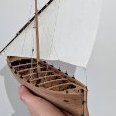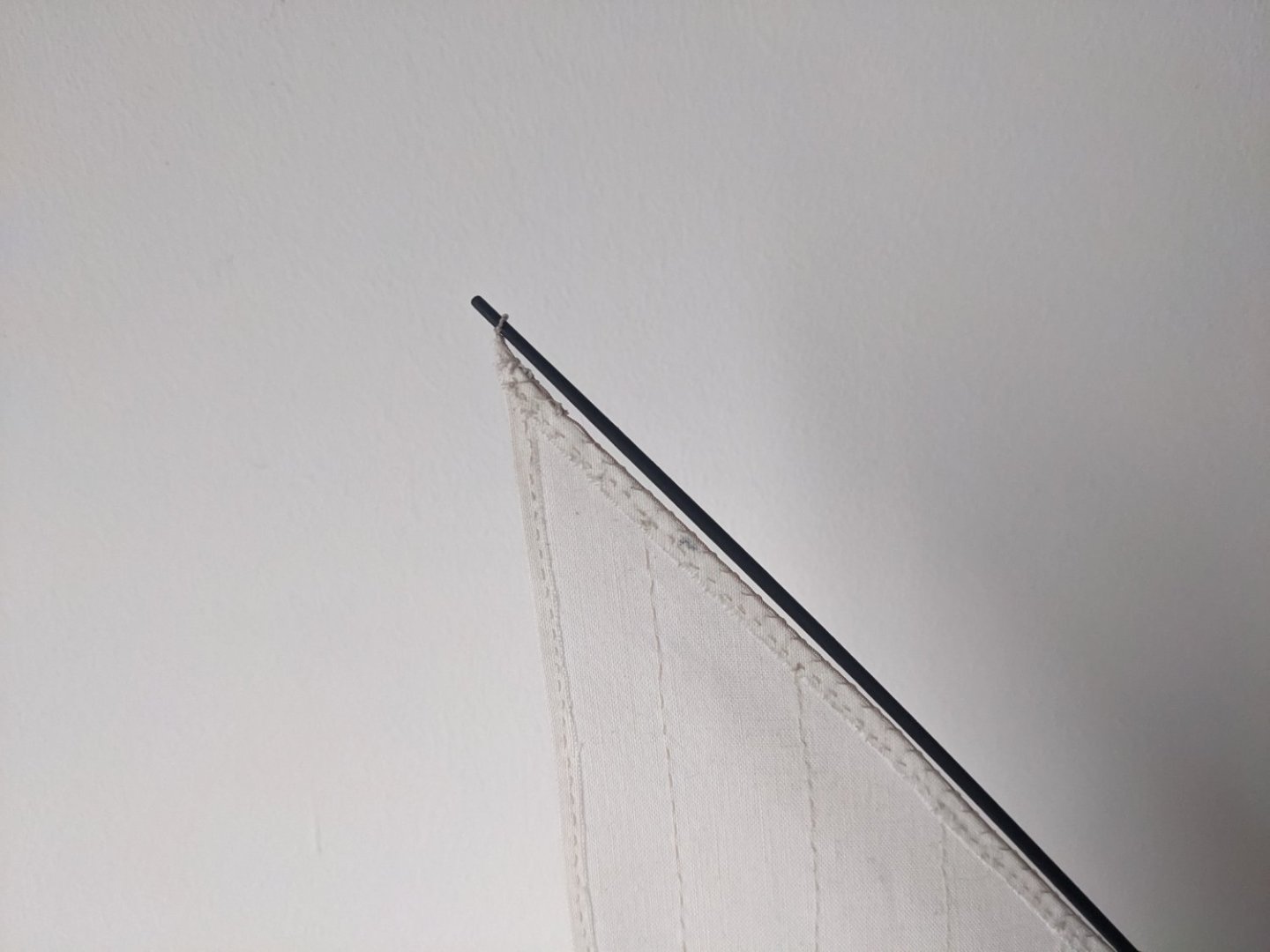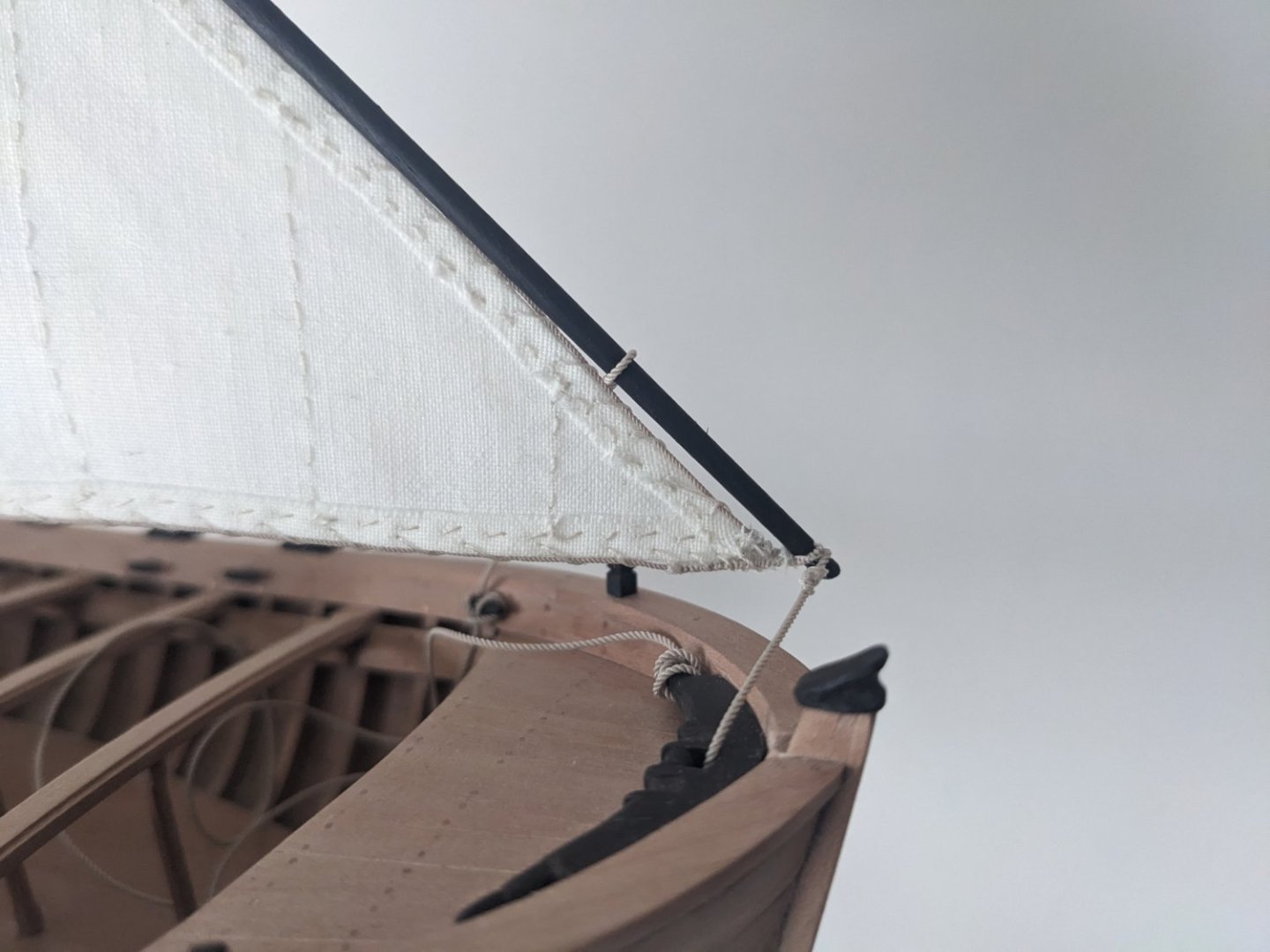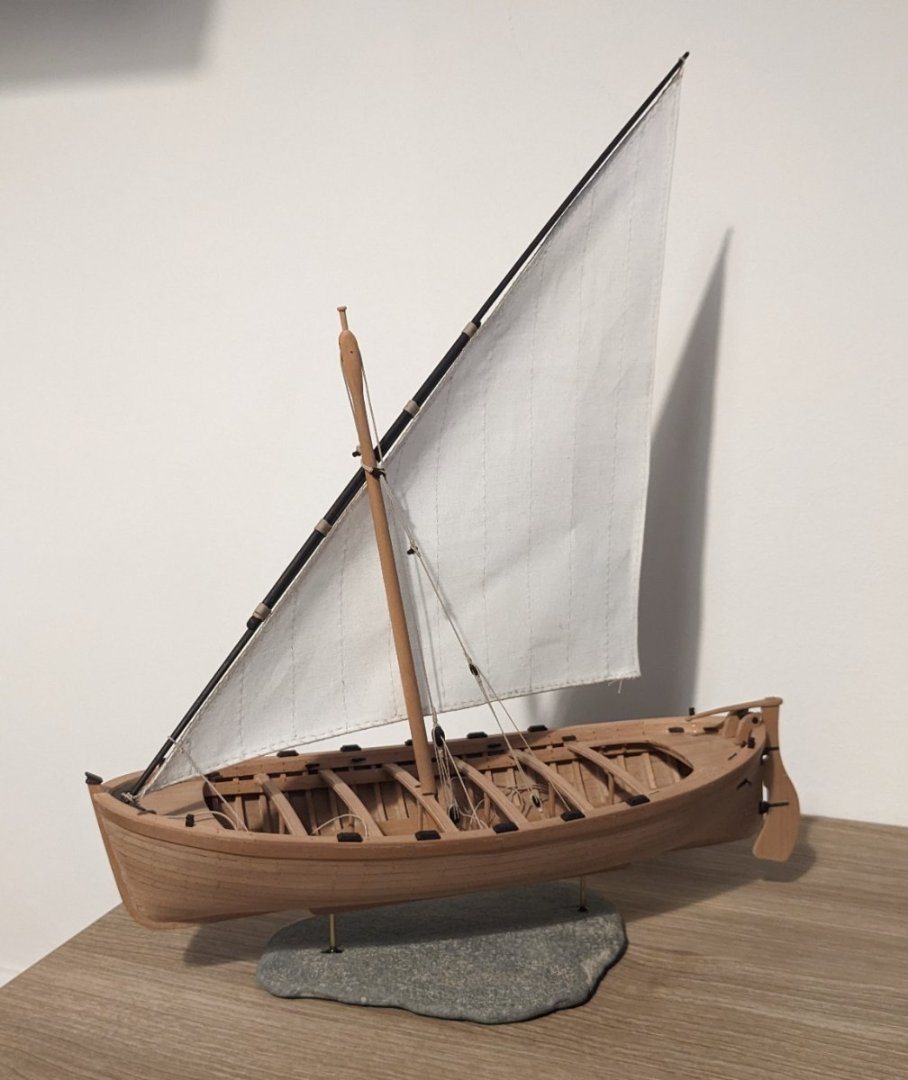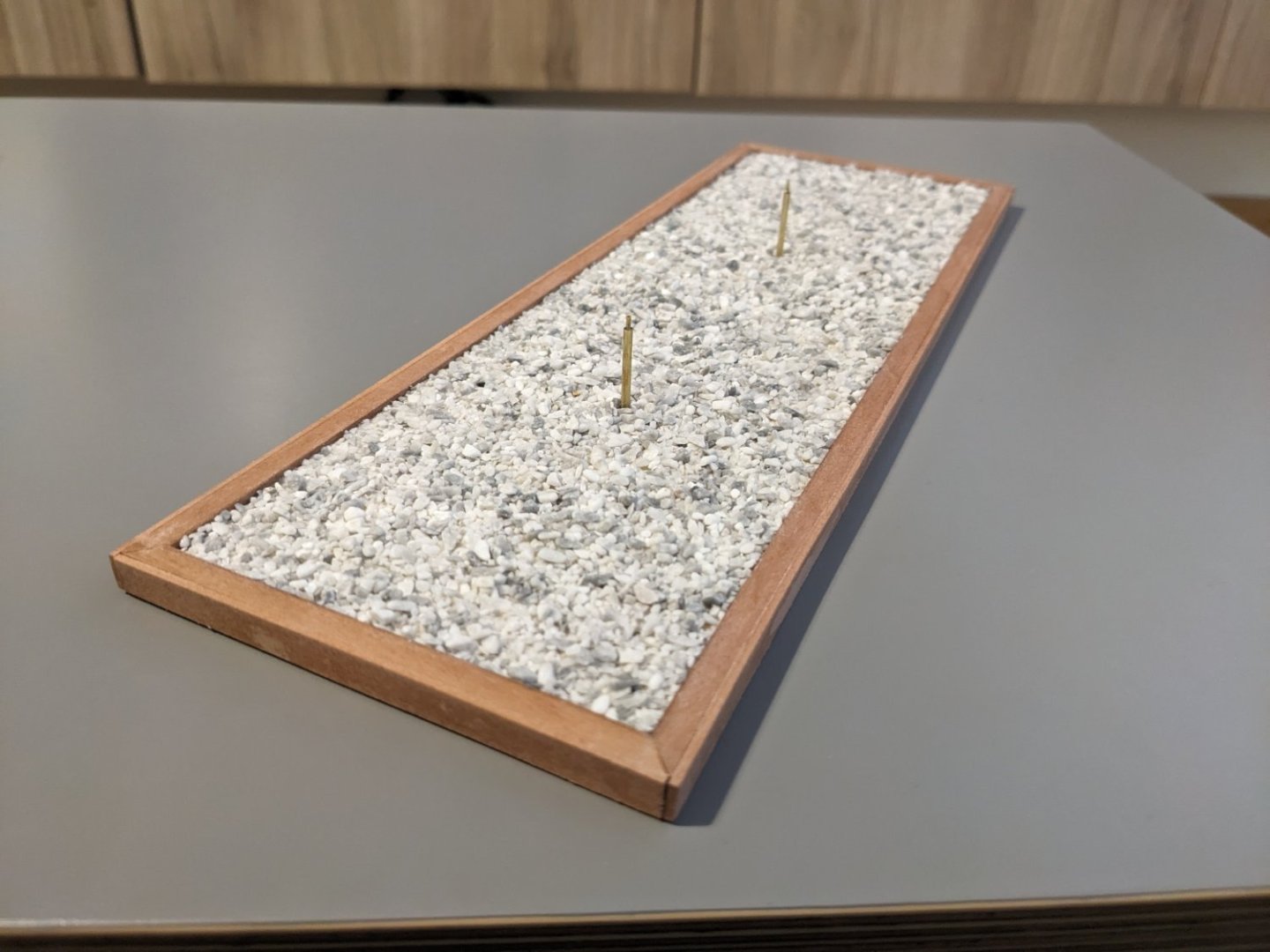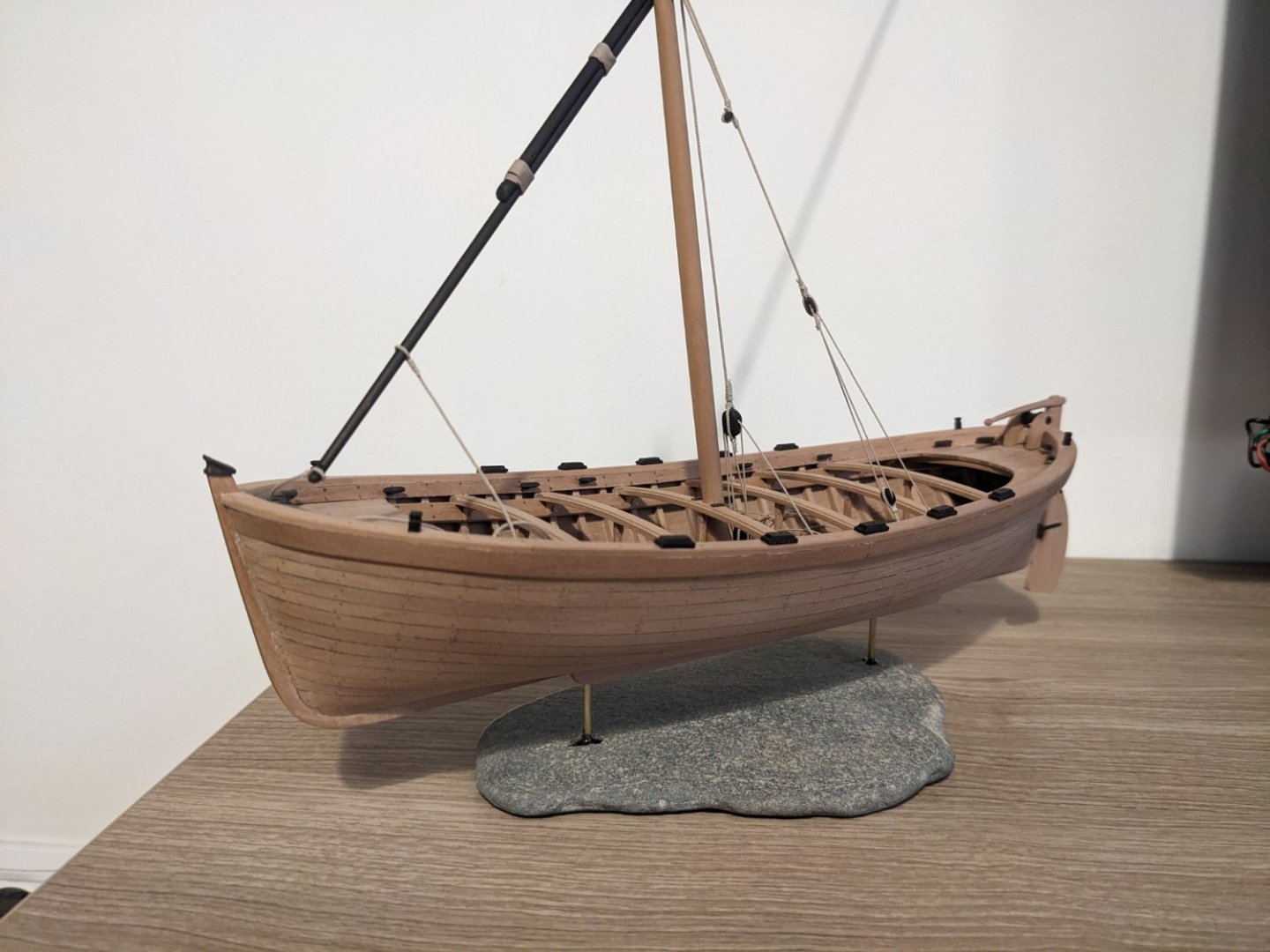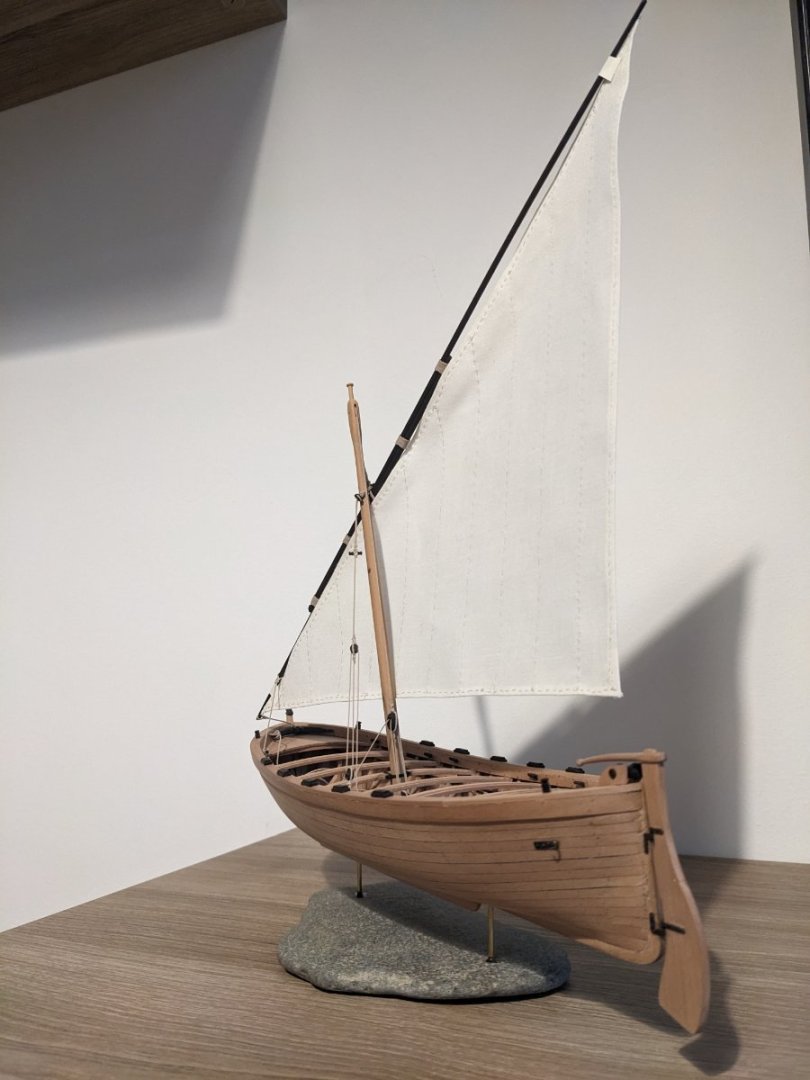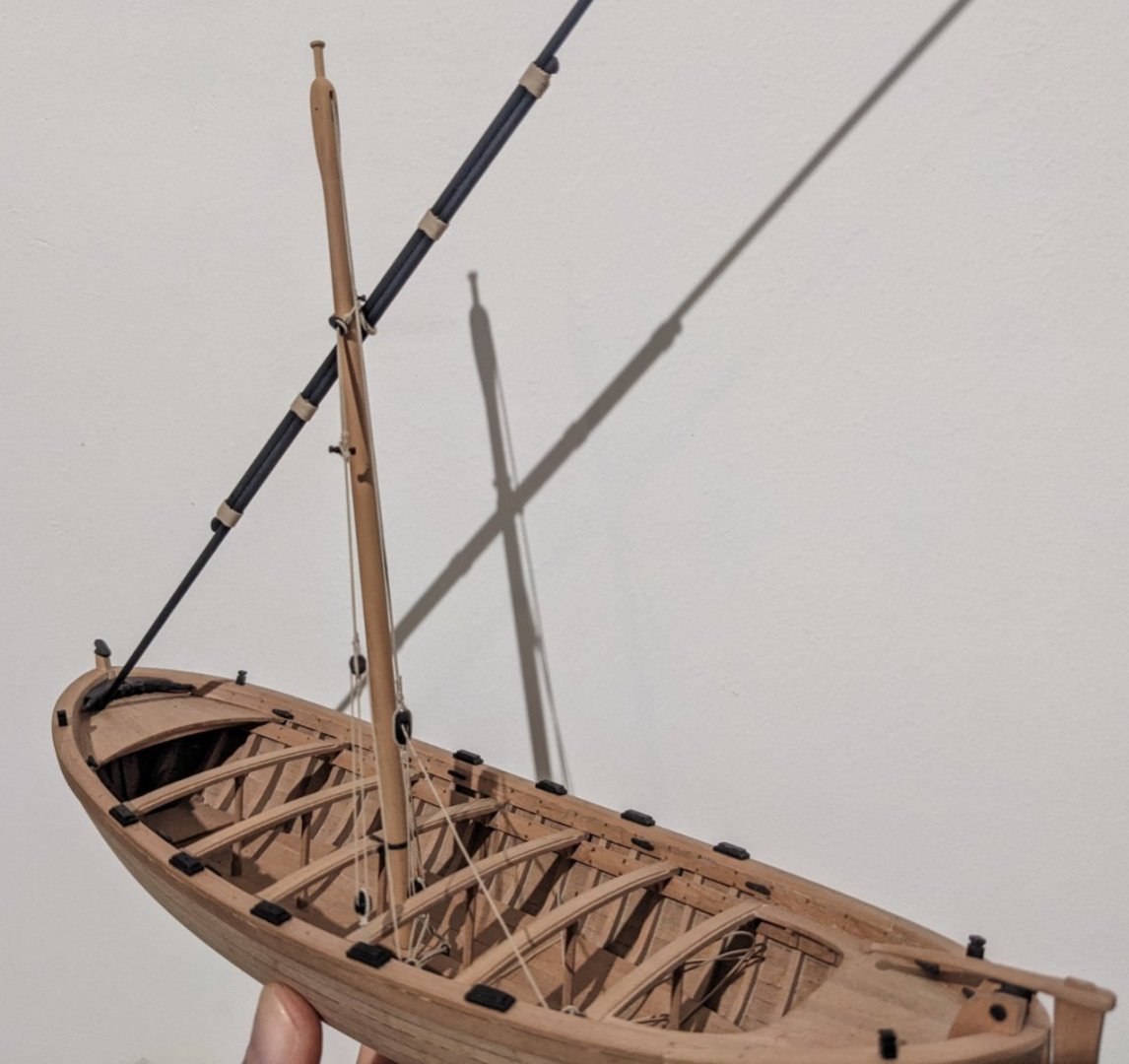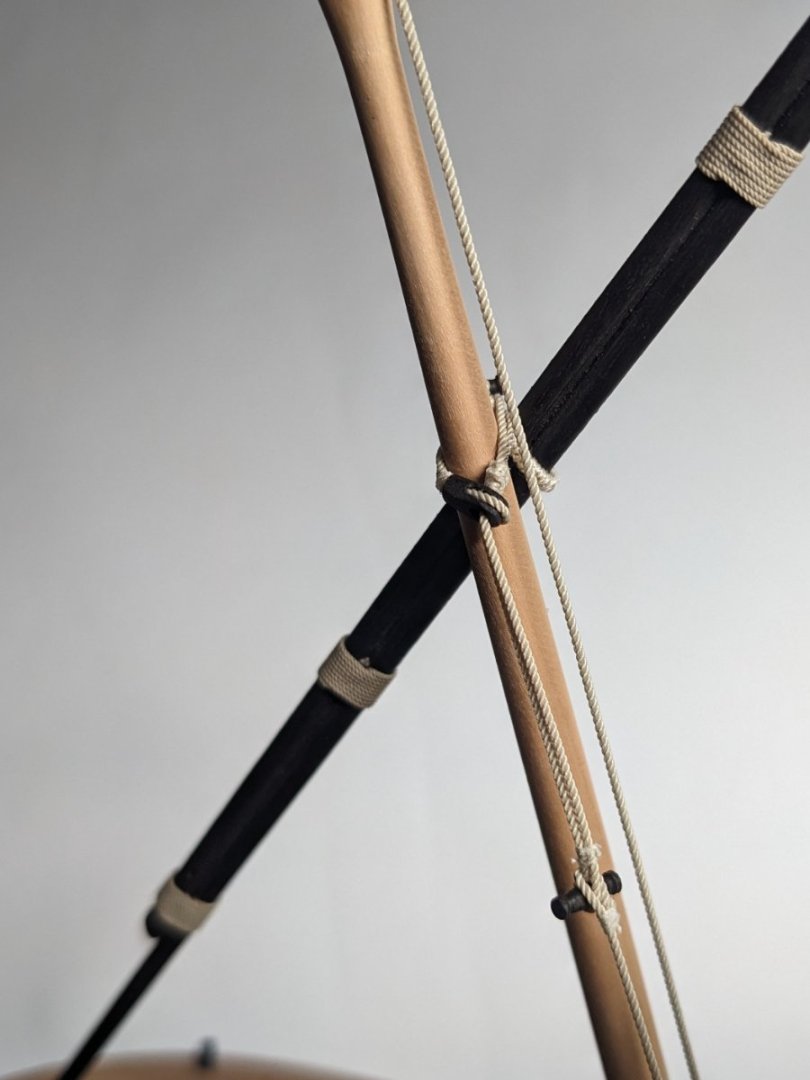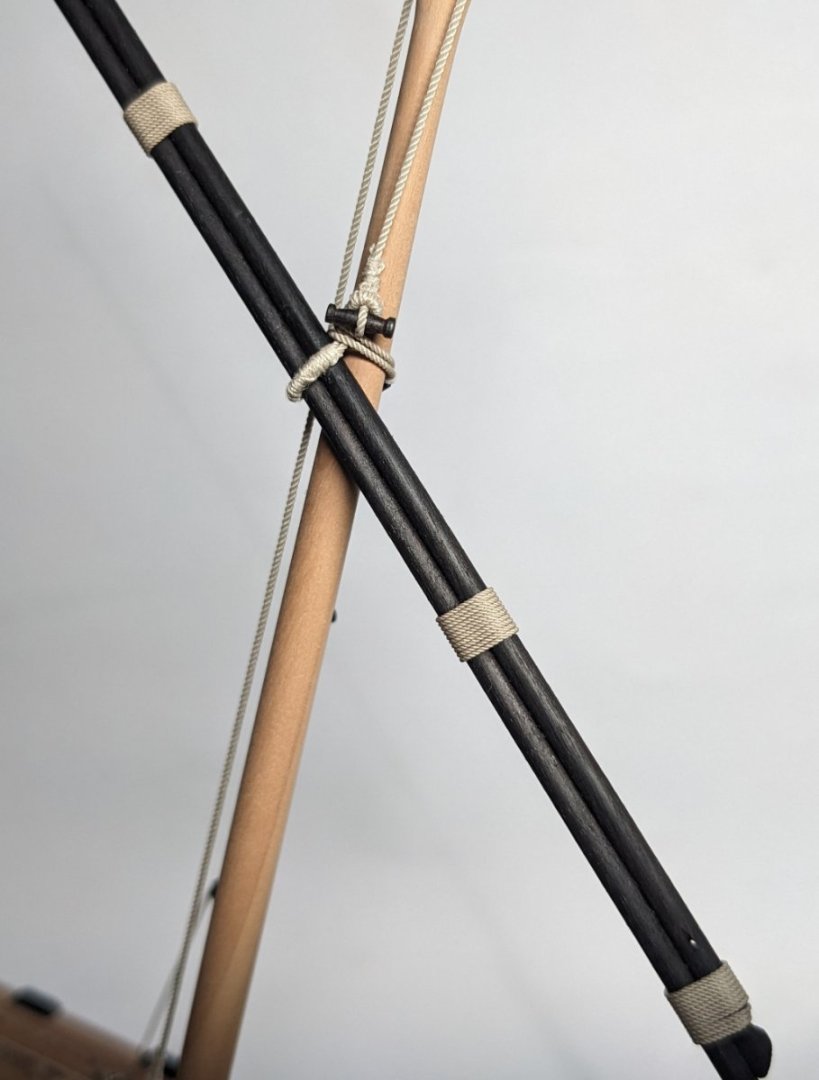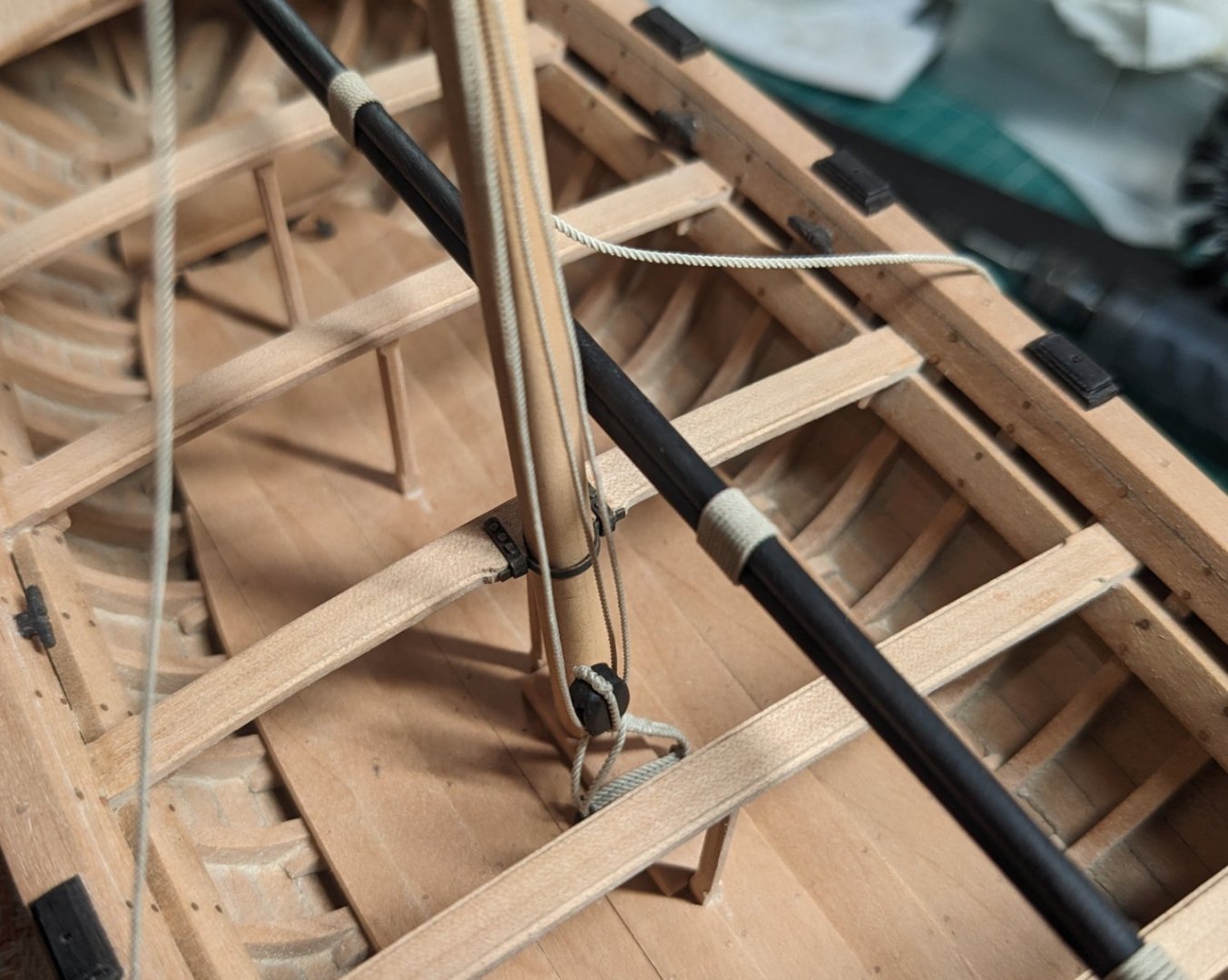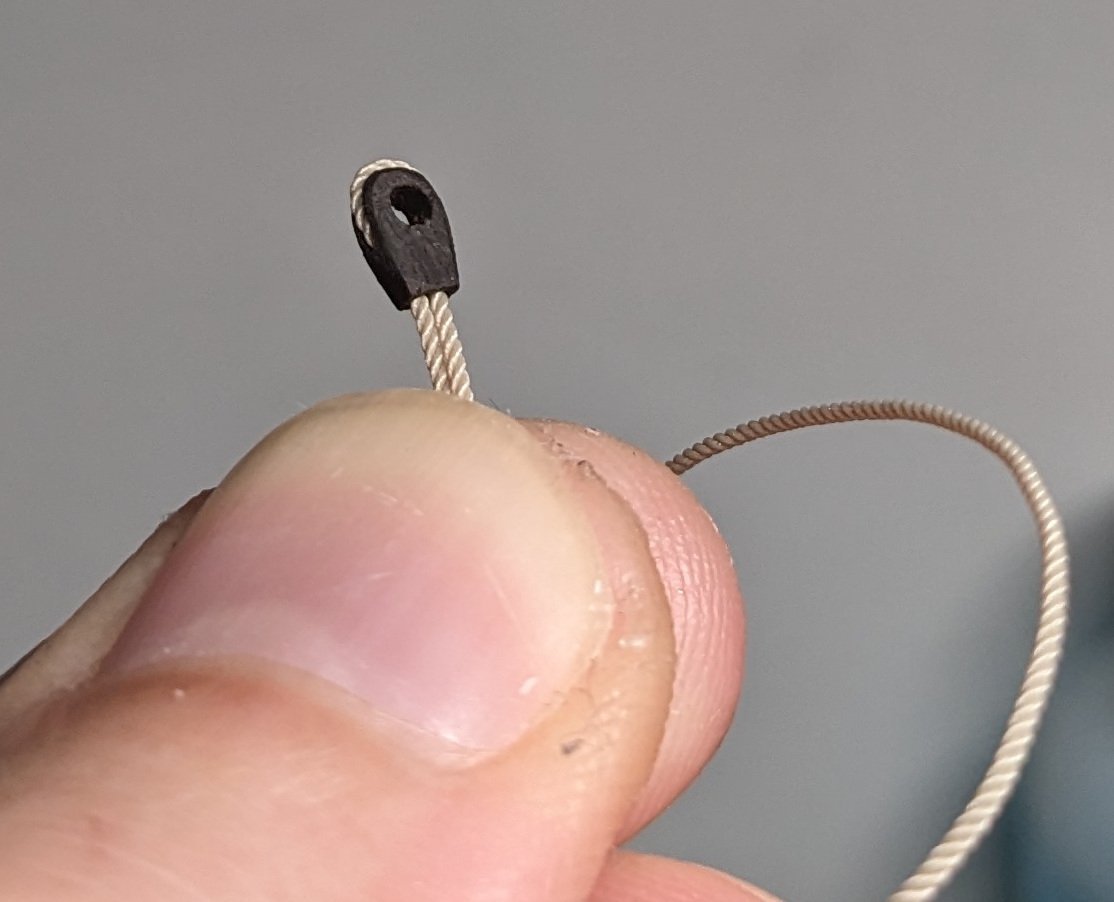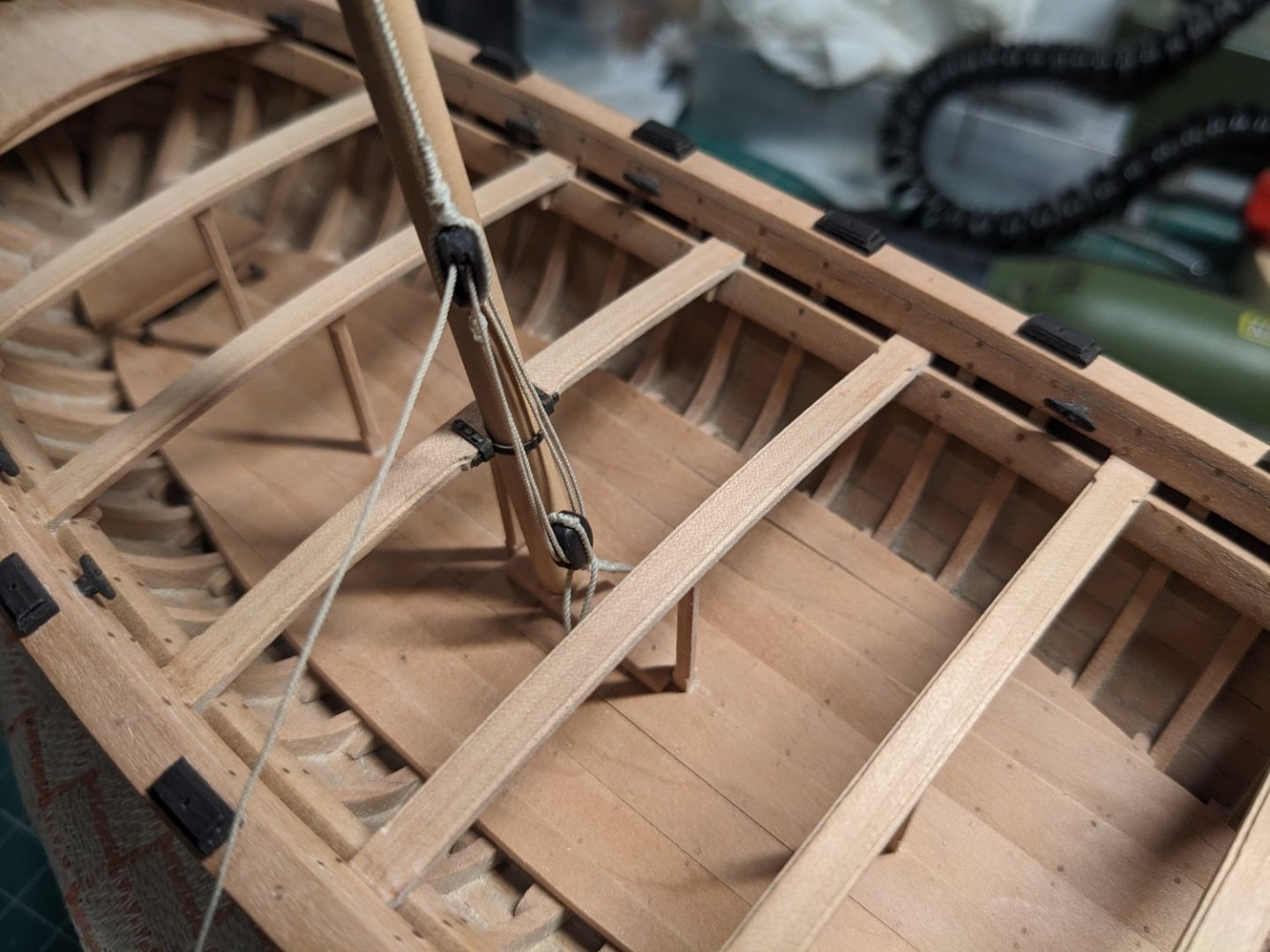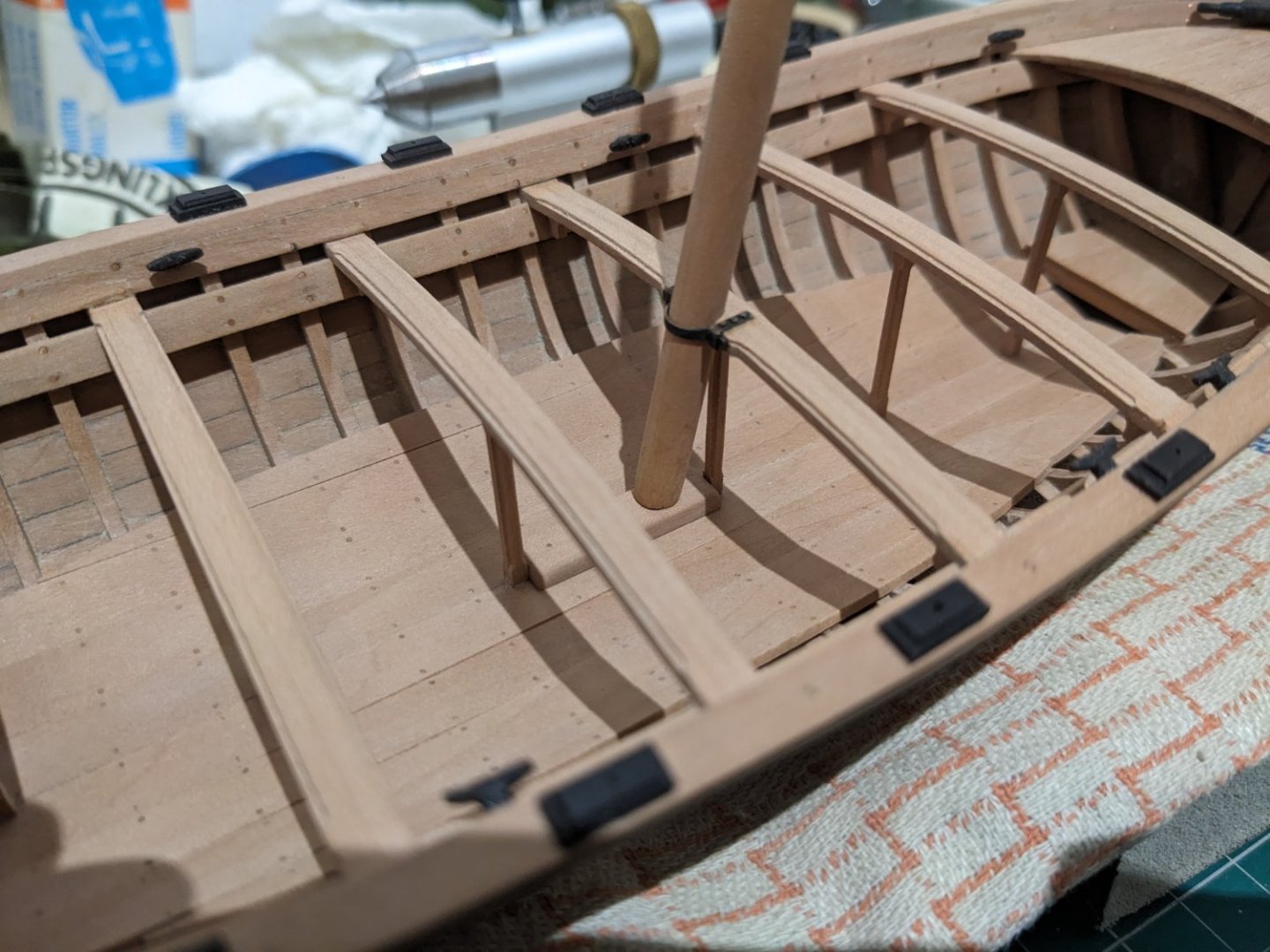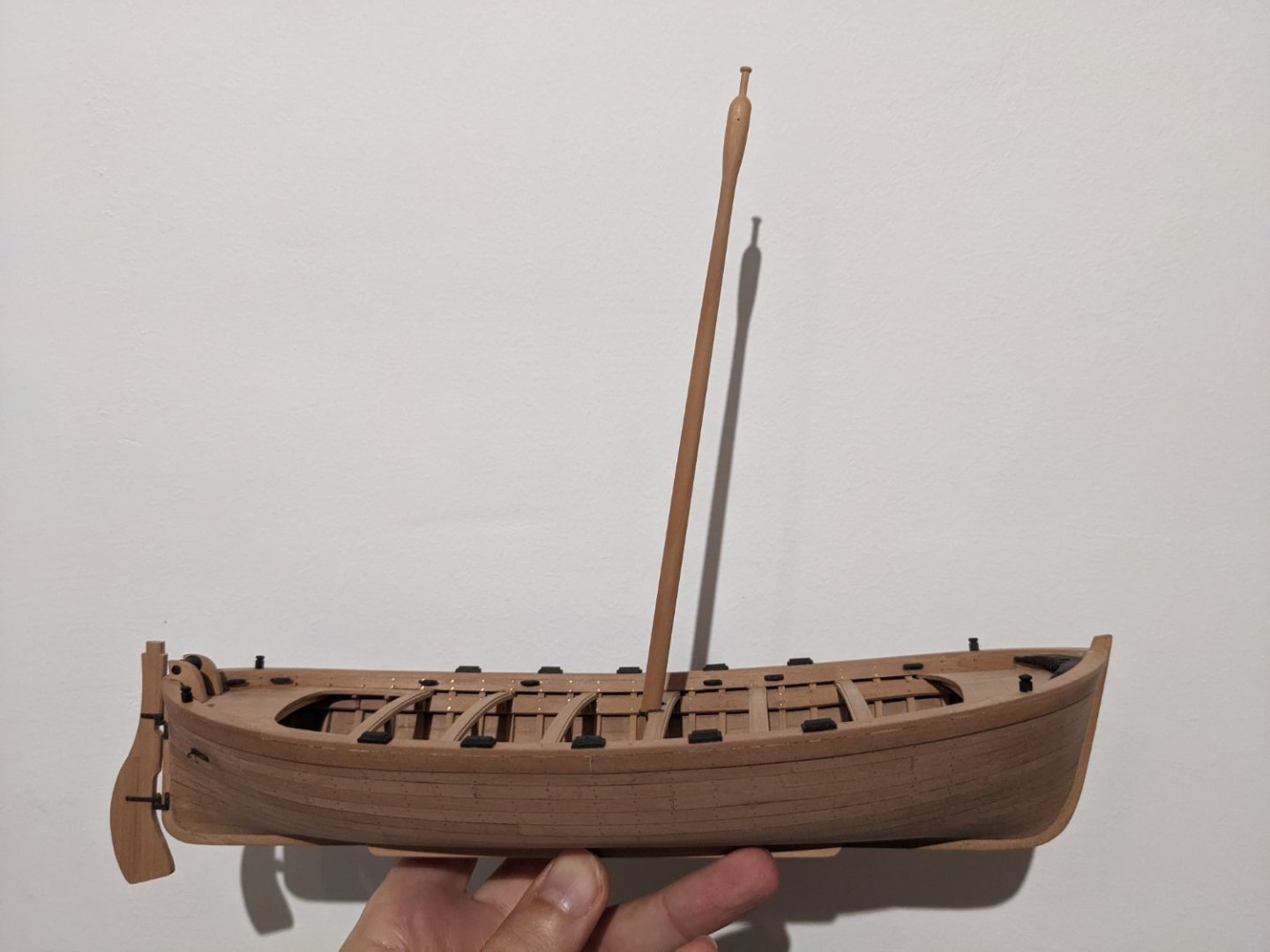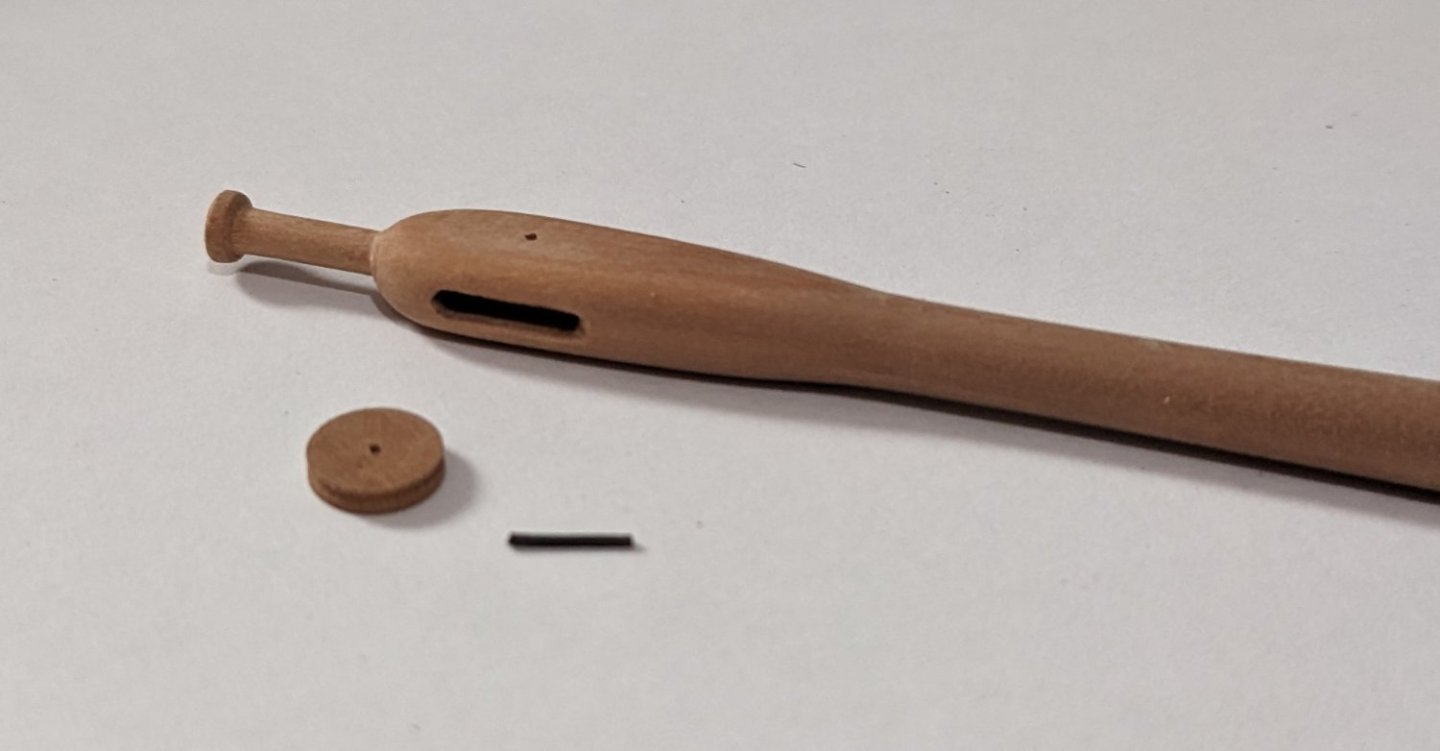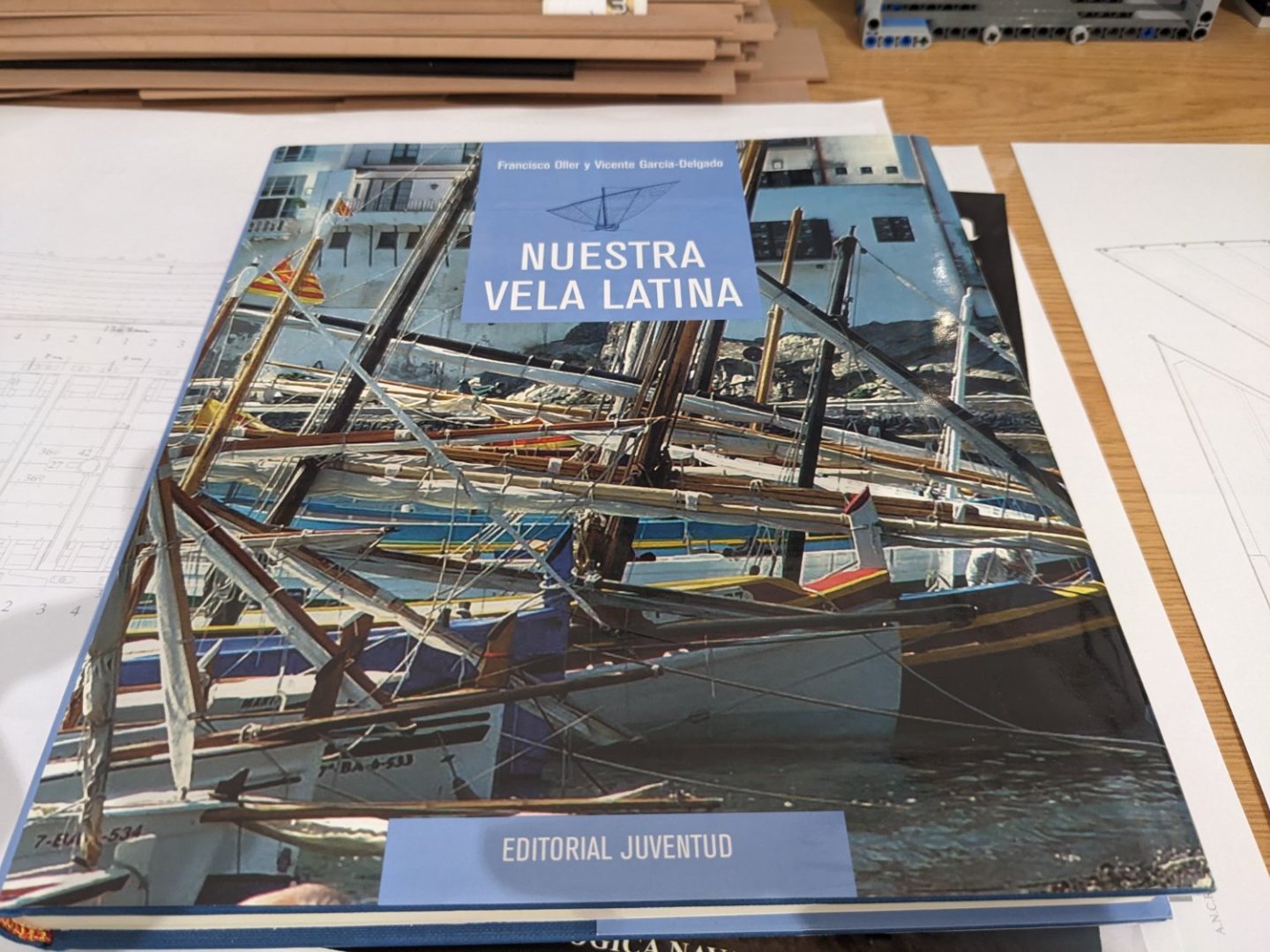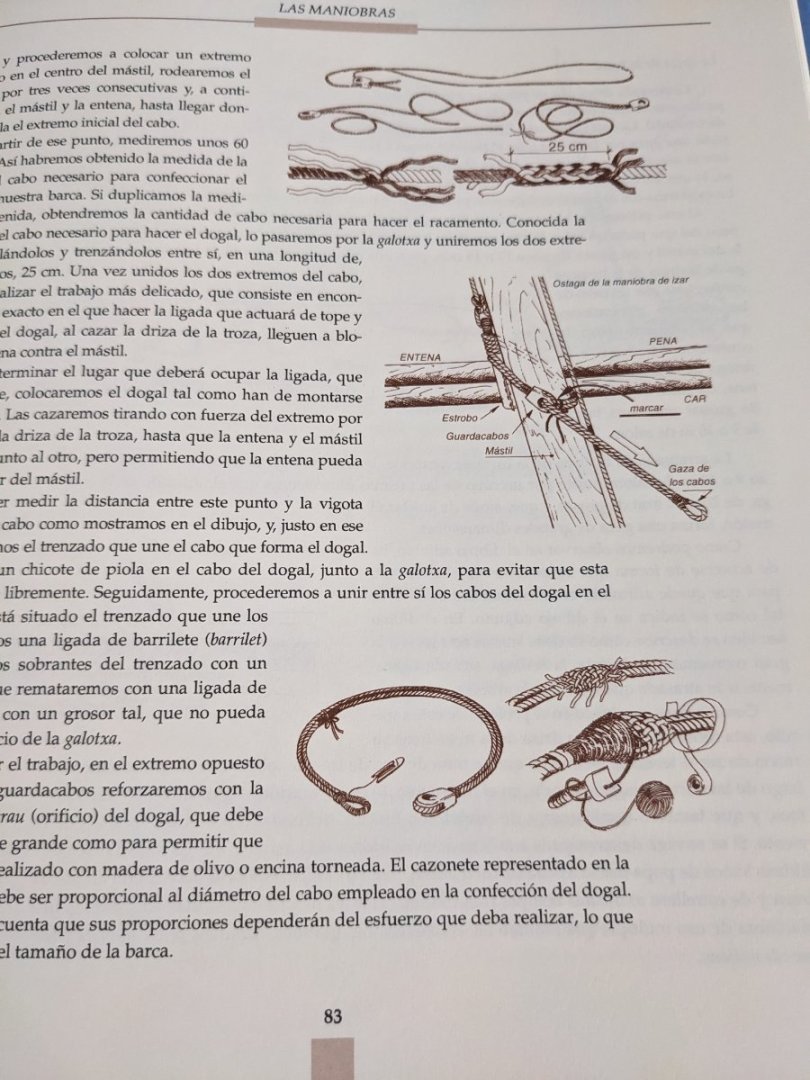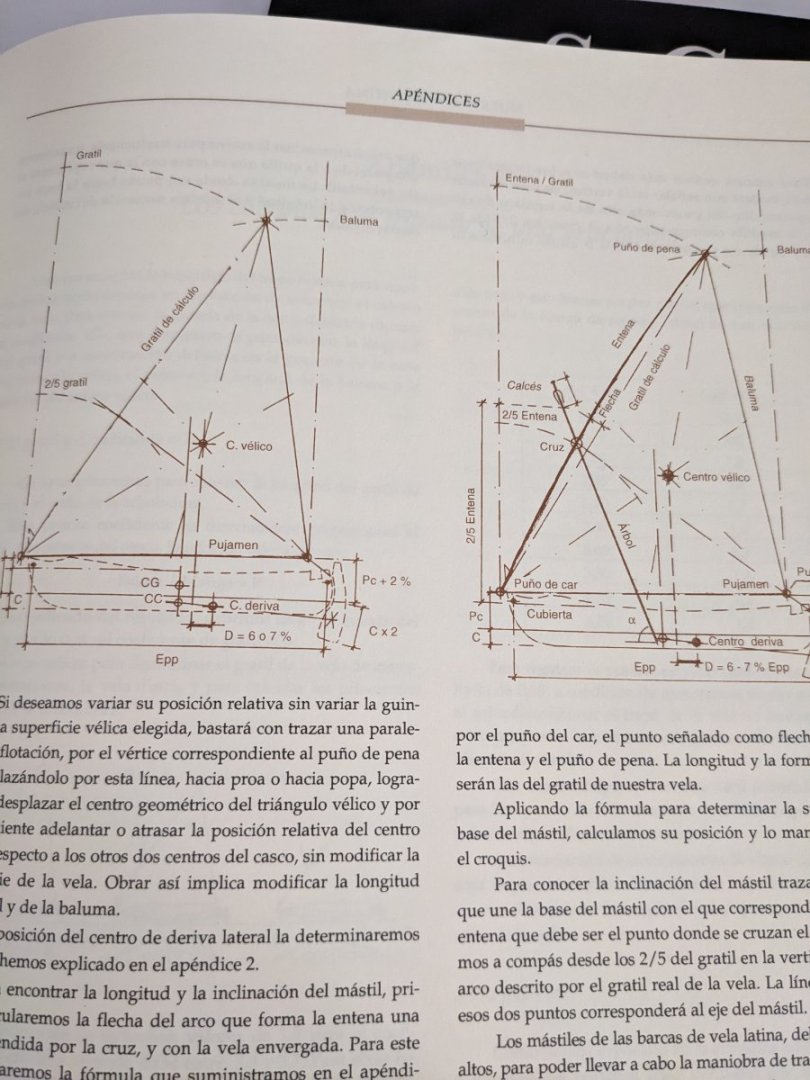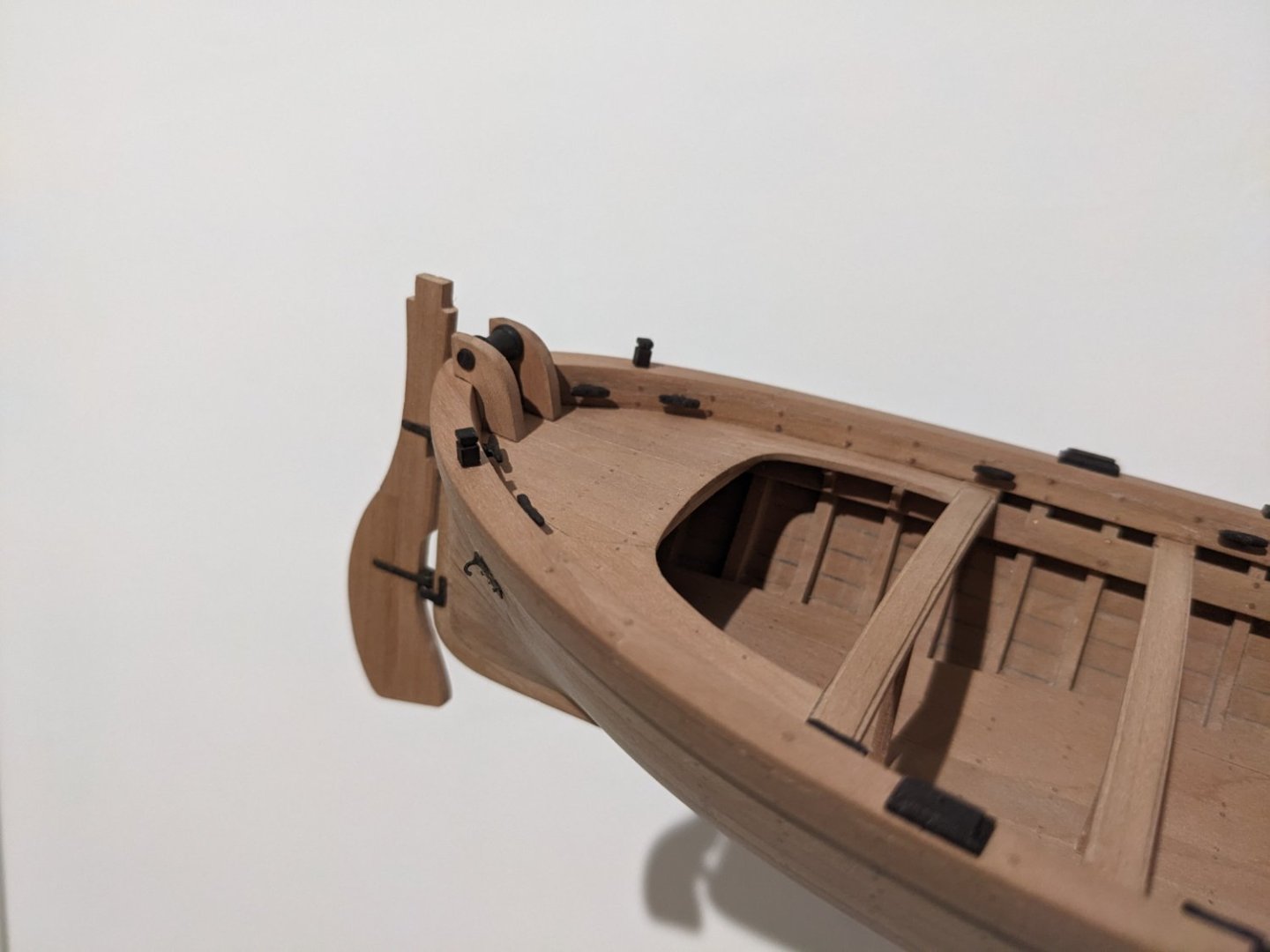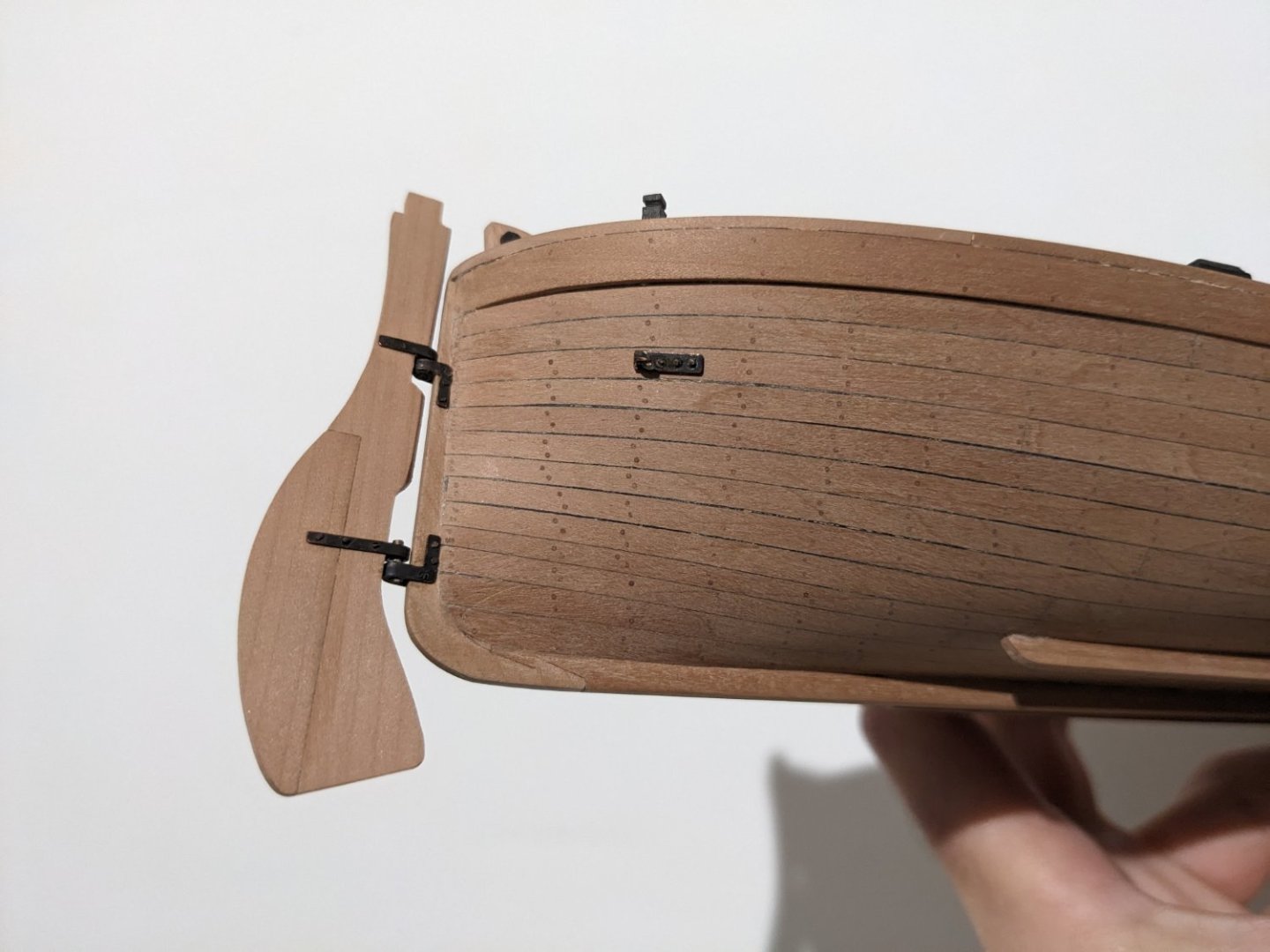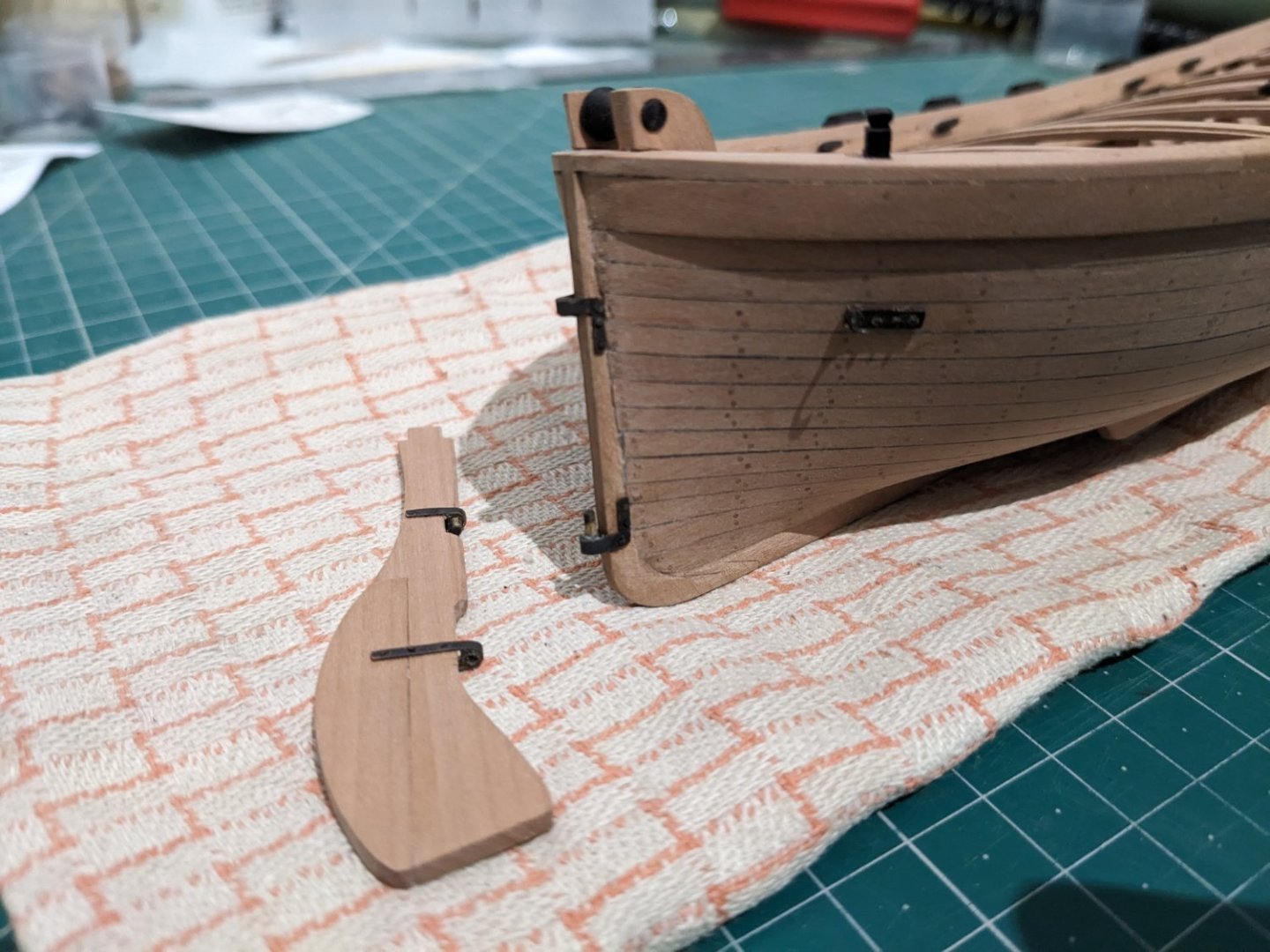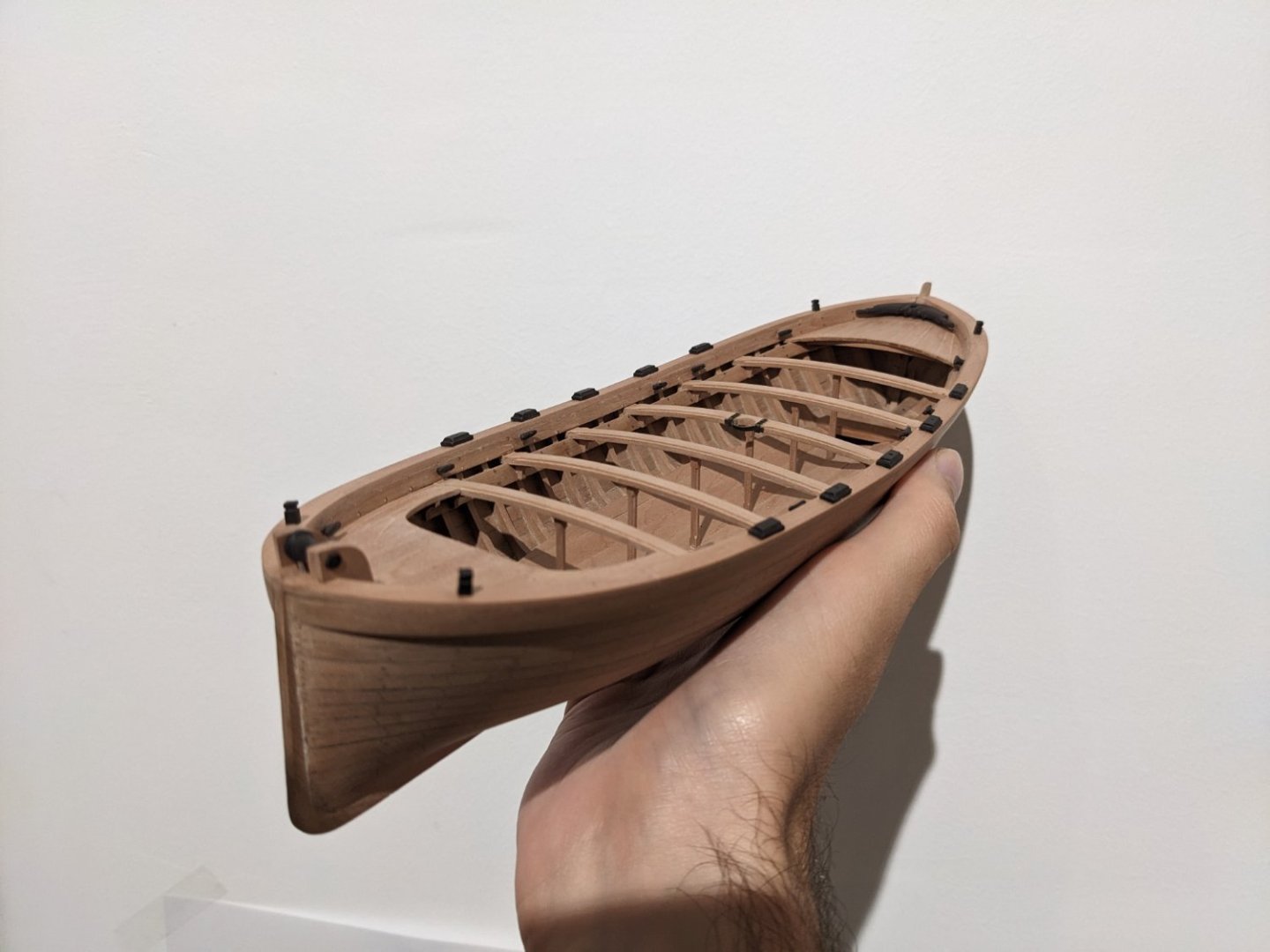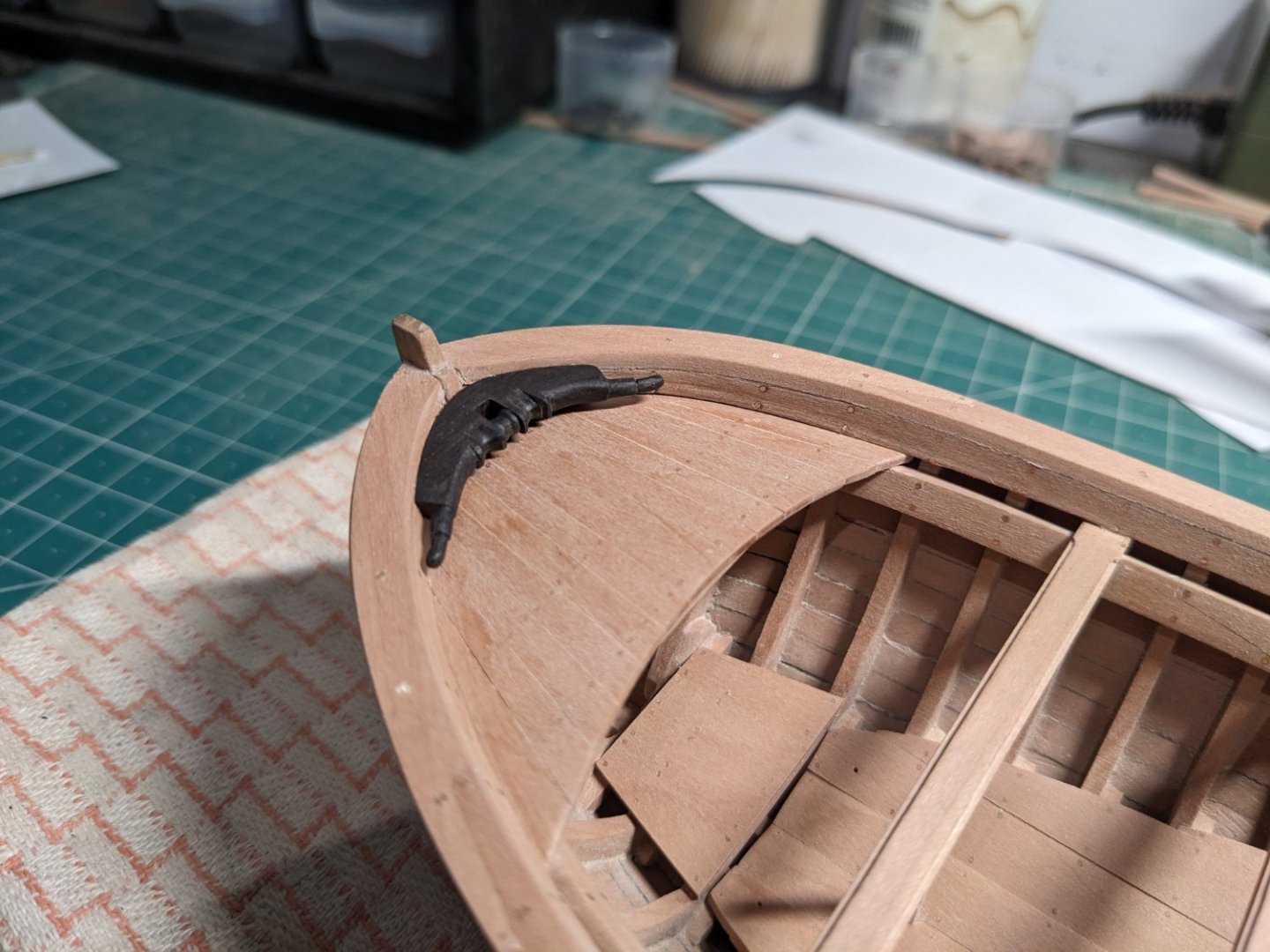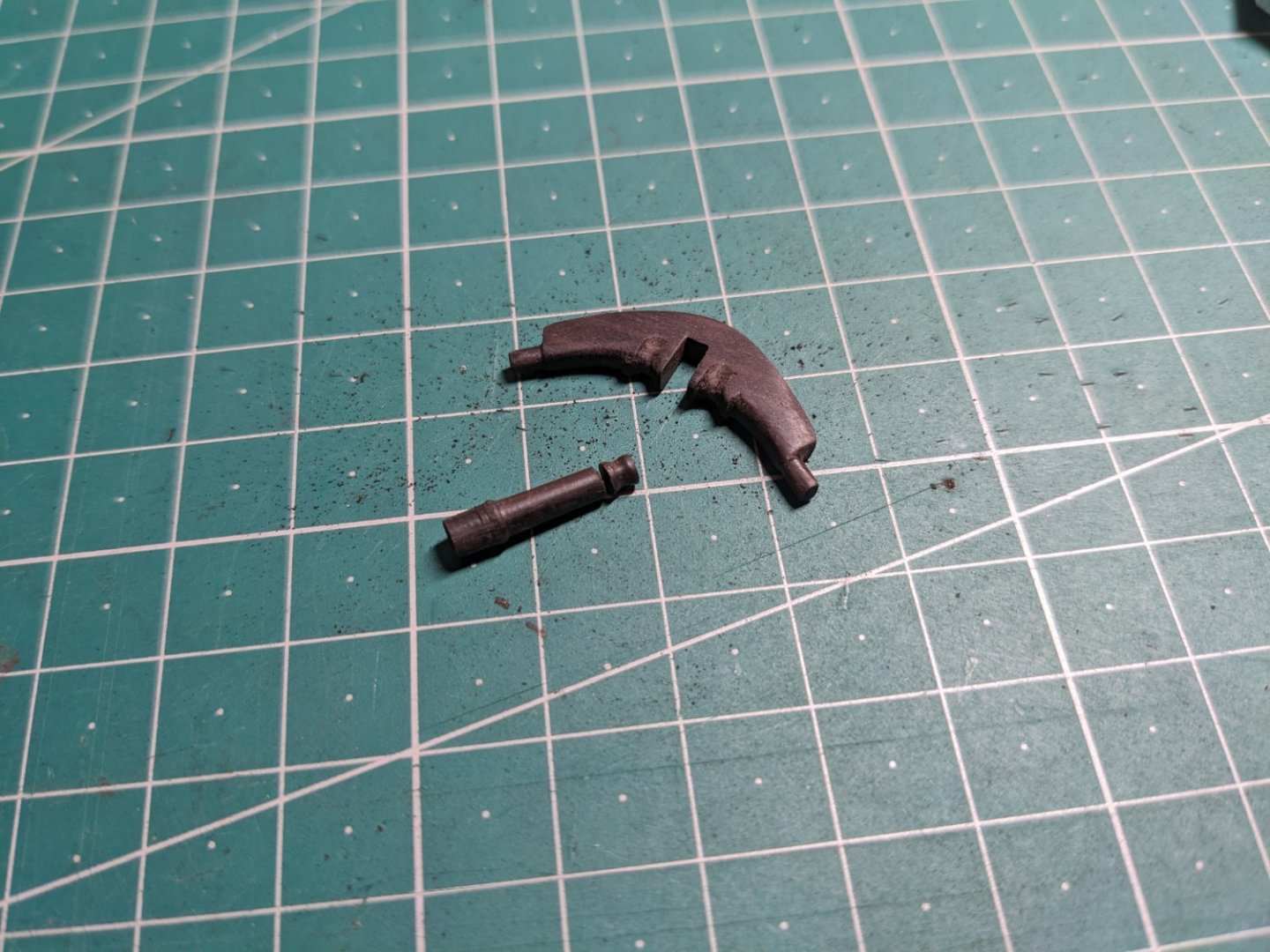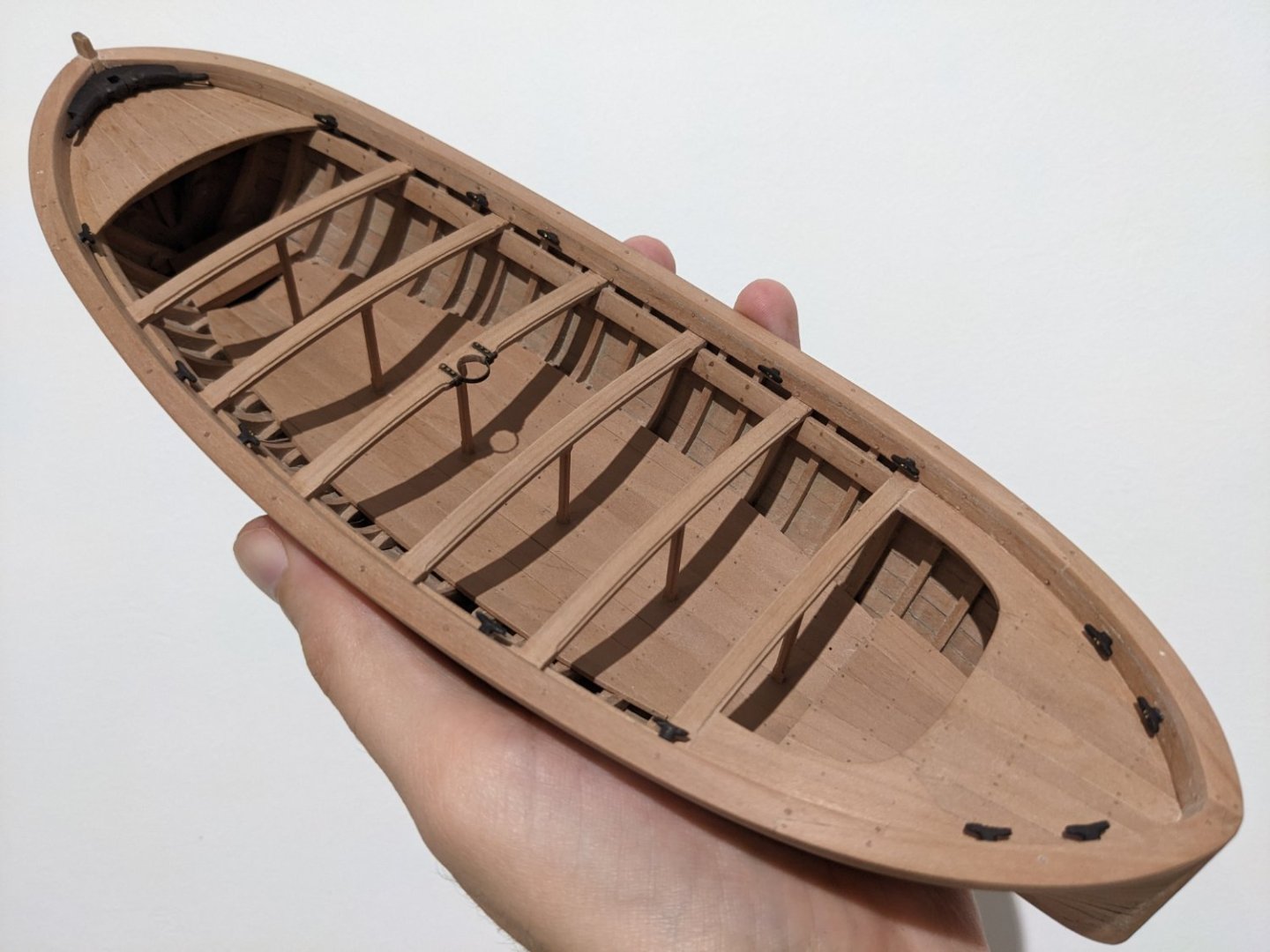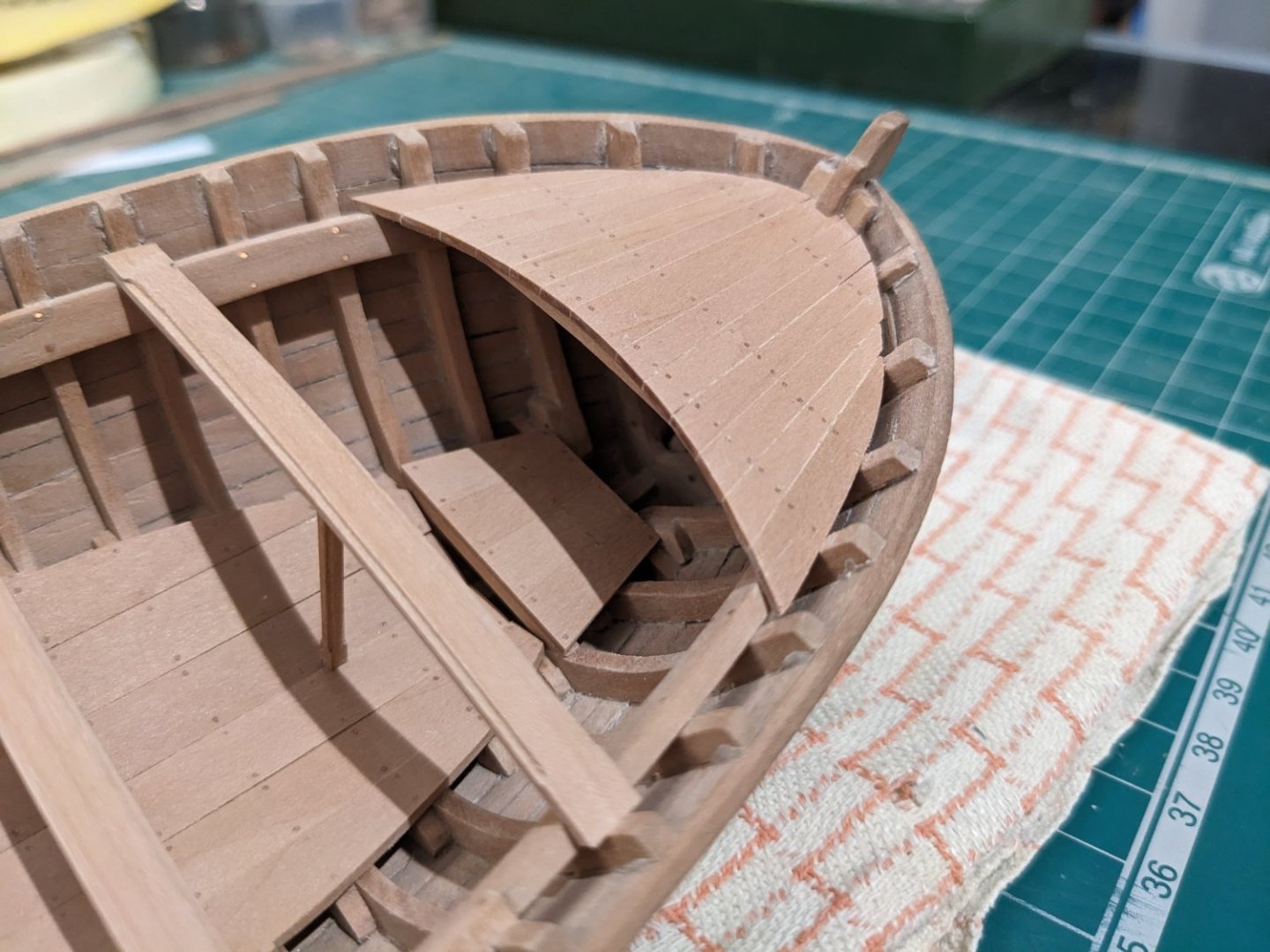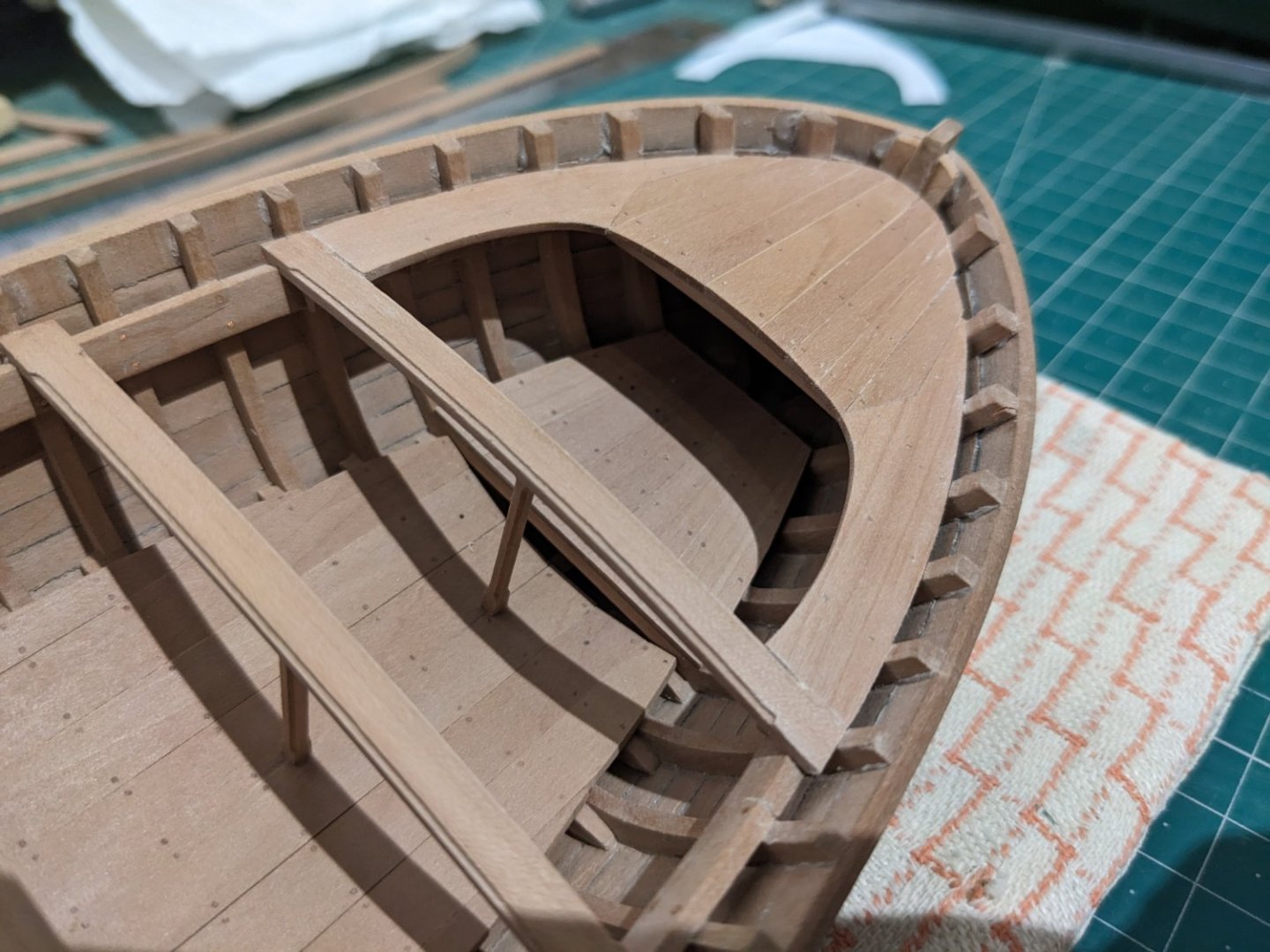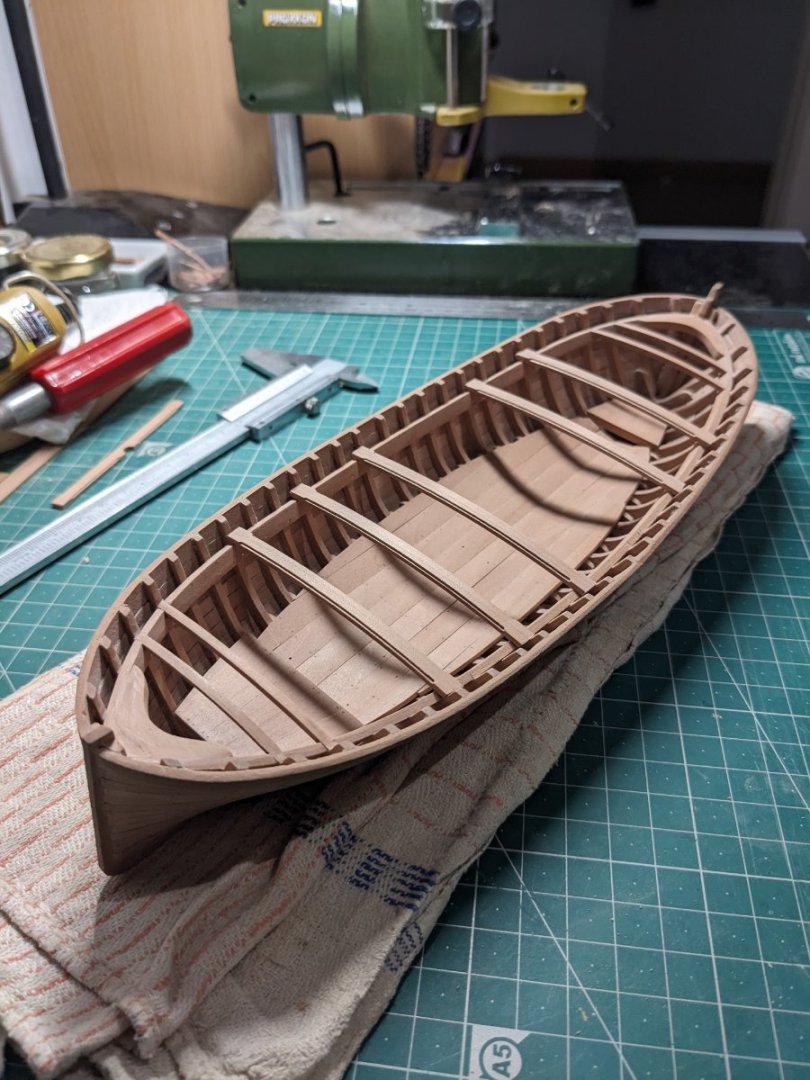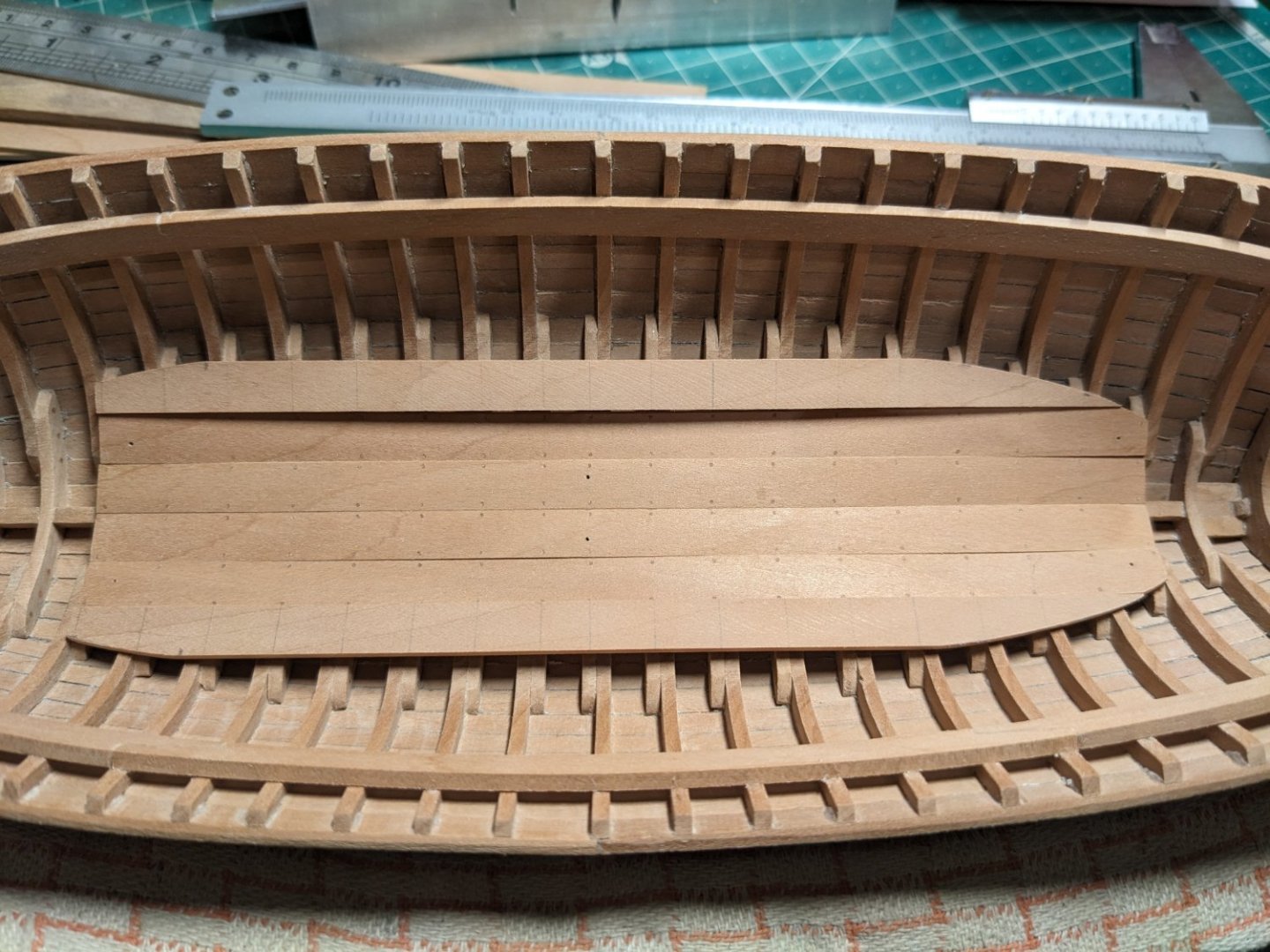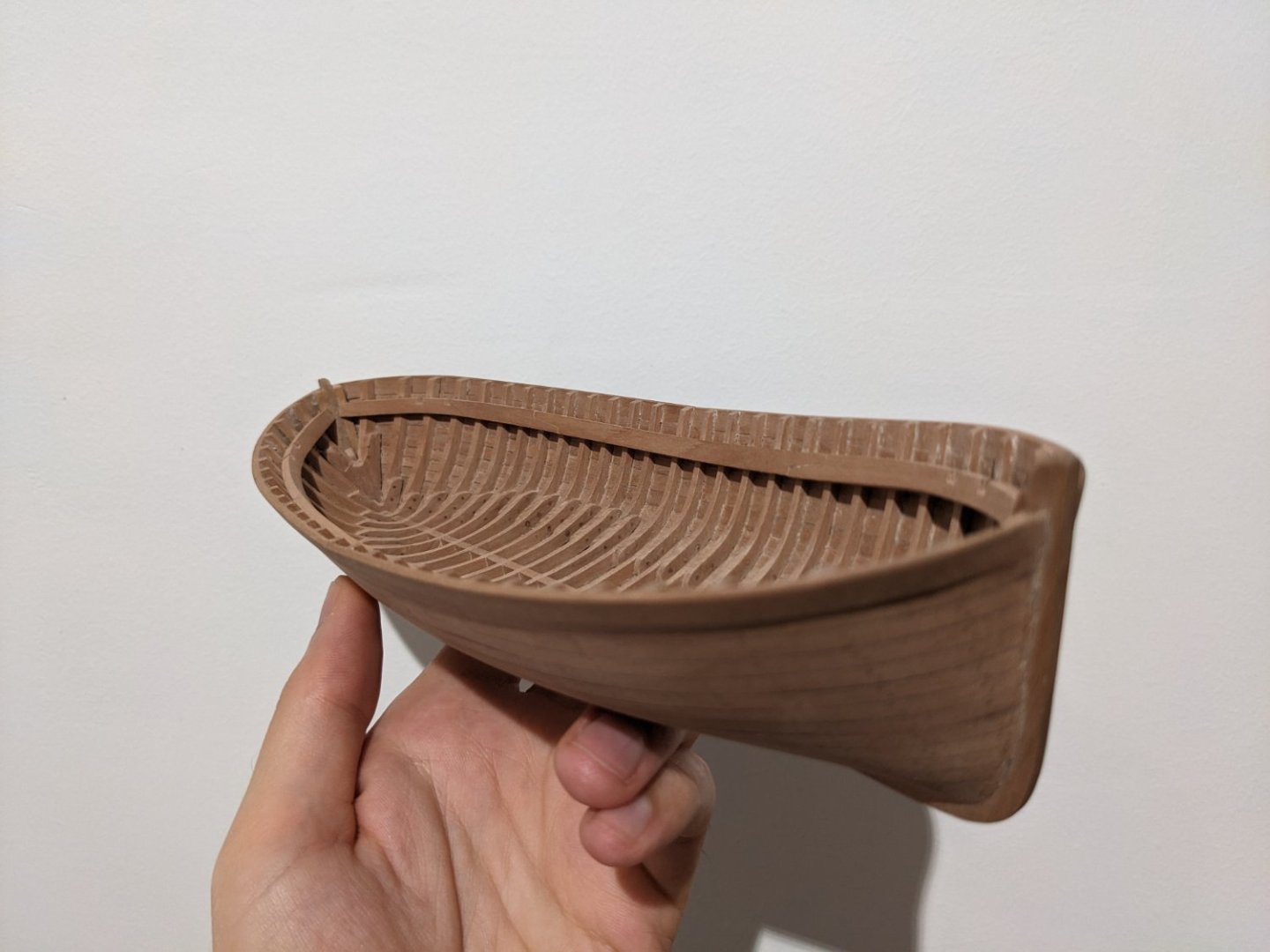-
Posts
123 -
Joined
-
Last visited
Content Type
Profiles
Forums
Gallery
Events
Everything posted by KLarsen
-
Today I sew the bolt rope onto the sail which means it's almost done, it just needs reinforcements at the corners and the ropes that attaches it to the antenna. It's not perfect but for a first attempt I think it's fine. I'll definitely keep it as it is.
- 61 replies
-
- ancre
- Santa Caterina
-
(and 1 more)
Tagged with:
-
This is my first time making sails. It's made from cotton and hand sewn (because I don't have a sewing machine). I know the stitches are probably too big for the scale but still I think it turned out fine. In my opinion the boat looks better with sail than without. Taping the sail on to get an idea of how it'll look:Also I tried making a stand that turned out absolutely awful. I used too much watered down glue for the gravel so the edges split:So instead I settled for a more minimalist stand from a stone I picked up last time the local river was dry:This stand has the added benefit that I can put a name plaque on it if I ever get around to making one.
- 61 replies
-
- ancre
- Santa Caterina
-
(and 1 more)
Tagged with:
-
Enjoy it! It really is a great book with some lovely drawings.
- 61 replies
-
- ancre
- Santa Caterina
-
(and 1 more)
Tagged with:
-
From what I can see on the Ancre site the rigging for the N.S. del Rosario is the exact same as for the Santa Caterina. The dimensions might be more correct for a ship of that size, but there are still errors. To mention a few (from the Santa Caterina monograph): The antenna is simply too short, and not rigged correctly. It should be rigged at 2/5 its length, but on the monograph it's rigged at the halfpoint. It's upside down. 🙃 The rigging at the lower point of the antenna is completely wrong. There should be a line to hold the antenna at an angle (the davante) which is missing, and a line to move it sideways. That one's kinda there but completely wrong. The "lift" to hold the antenna at an angle should be behind the mast (the heaviest part) and not in front as on the monograph. Having it in front makes no sense, you want to lift the heavy part of the antenna, which due to the triangular shape of the sail is behind the mast (also 3/5 of the antenna extends behind). And then the monograph has several lines which serve no purpose. Some of them might on a heavier ship, though, my knowledge doesn't extend that far. I wouldn't have known any of this if I hadn't read the book 'La Vela Latina' and double checked with photos of real lateen rigged boats.
- 61 replies
-
- ancre
- Santa Caterina
-
(and 1 more)
Tagged with:
-
More rigging. The book I'm using 'Nuestra Vela Latina' es basically my guide at this point. The cross where the antenna is mounted. And from another angle. This is more or less the angle I'll be displaying the antenna at. Of course I'm also going to make the sail if I can. Next will be the rigging to move the antenna sideways. The monograph is completely wrong at this point, I'm honestly surprised how bad it is. The part describing the construction of the hull is great, but the rigging leaves a LOT to be desired. I'll see if I can describe all the issues later, maybe writing a full review of the monograph (which I still very much recommend!).
- 61 replies
-
- ancre
- Santa Caterina
-
(and 1 more)
Tagged with:
-
Getting started on the rigging. I'm using rope from Ropes of Scale, it looks absolutely amazing! The blocks are made from black hornbeam. I tried making working pullies for the double blocks but it was impossible for me to cut them at 0,5mm, they simply disintegrated, and I couldn't find any metal pullies at that size to buy. So the tackle is not as smooth as it could be, but it still works. The tackle for raising the antenna is again simplified compared to the monograph, which uses blocks with 5 and 6 pullies. This block is for seizing the antenna to the mast. Standard thumb for scale (I'm not a giant!). I'm actually surprised I was able to make that on my first try...
- 61 replies
-
- ancre
- Santa Caterina
-
(and 1 more)
Tagged with:
-
I'm progressing a lot these days, I just installed the mast and started on the antenna. The way the mast is installed according to the monograph is almost correct, it just needs to be slanted a few more degrees forward (again, because the antenna is longer). I slightly reworked the mast foot since it's supposed to spread over 3-4 frames. It should probably extend further forwards too, but the oar bench support is in the way and I don't want to rework that; it's "good enough" as it is. 😂
- 61 replies
-
- ancre
- Santa Caterina
-
(and 1 more)
Tagged with:
-
No, unfortunately it doesn't, though it does explain the construction but not in enough detail to construct a boat. Good luck with your project!
- 61 replies
-
- ancre
- Santa Caterina
-
(and 1 more)
Tagged with:
-
This week I started on the mast. It's very different from the one shown in the monograph, which is more adecuate for a large xebec. My mast is simpler, has only one sheave and is about 1cm taller. It took me a few hours to make on my Proxxon lathe. The sheave is from pear and fully works. If anyone is interested, this is the book I'm using which explains how the lateen rig works. As far as I know it's only available in Spanish, but if you can read that I highly recommend it. It goes over the history of the lateen sails, how the boats are (and were) constructed, and how to sail them. It mainly focuses on Catalan boats but is useful for any small lateen rigged boat. The appendices are especially useful since they go over the calculations required to rig a boat.
- 61 replies
-
- ancre
- Santa Caterina
-
(and 1 more)
Tagged with:
-
Speaking of the rudder, this afternoon I finished and attached it. The hinges were difficult to make but I think they turned out fine. I would have wished the rudder to sit a little closer to the stern post, but I'm happy with the result. Since I intend to put a longer antenna and sail on the boat, the rudder needed to be longer (at least according to my research). As you can see, it extends below the keel. It should have been even longer (twice the draught), but I settled for a little less. in the photo above you can also see the side keels which are necessary for a lateen rig, and the hooks to haul the boat onto the beach. The rudder turns freely on the hinges and can be detached. I've yet to make the tiller. Now I can get started on the mast and rigging!
- 61 replies
-
- ancre
- Santa Caterina
-
(and 1 more)
Tagged with:
-
Hi Cnemo, The hull with the rudder is 29 cm long and 9,5 cm wide at the beam. This is 2/3 the size of the monograph. When I finish this project I'll make a stern cross section of the Spanish frigate La Mahonesa in 1/48 scale. The wood is already on the way so I'll probably start on it in a few months. I'll be sure to make a build log here!
- 61 replies
-
- ancre
- Santa Caterina
-
(and 1 more)
Tagged with:
-
At this point the boat is almost complete, just missing some iron work and the rudder. Then I can start on the mast and antenna, which as I mentioned before will be different from the monograph. I should be finished with this project in a few months, then I can start on my next project which will also be an Ancre monograph.
- 61 replies
-
- ancre
- Santa Caterina
-
(and 1 more)
Tagged with:
-
My progress has been pretty slow lately as I've been travelling and studying, but I'm finishing up the hull with all the small details. I'm using black hornbeam for the items that are supposed to be tarred black. I've never worked with this wood before but I like it, it doesn't hold an edge as well as swiss pear but the finish is really nice. Also, it's a bit like carving chocolate... 😋 (I haven't tried tasting it!).
- 61 replies
-
- ancre
- Santa Caterina
-
(and 1 more)
Tagged with:
-
Cap rail finished, but not yet treenailed. I deviated a bit from the plans here; the scarf joint was supposed to be midships, but that would have resulted in the wood grain running perpendicular to the rail at the ends, as there was no way I could bend it 90 degrees. Instead I made a joint at each end of the boat which seems more natural to me. Now I can start on all the details and then it's on to the rigging, which I've completely reworked. I'm now certain that the monograph has copied the rigging from a much larger ship, at one point it mentions that the antenna and sail would have weighed 4 tons and that the sail has an area of 45m² - the boat itself is less than 6 meters long!
- 61 replies
-
- ancre
- Santa Caterina
-
(and 1 more)
Tagged with:
-
Progress is rather slow lately due to the summer heat and travelling. Still, I've finished the two small decks and most of the oar benches. Looking ahead, I've found several issues with the way the rigging is represented in this monograph, and I frankly don't understand the author's basis for rigging the boat this way. The two biggest issues are: The antenna and sail are too small. According to the research I've done the antenna should be at least 1,2x times the length of the boat for a winter sail, which is the smallest. On the plans, it's less than 1,1x. The rigging and blocks are very heavy duty, much more than required for a 5-6m long boat. I suspect this has been directly copied from the monograph of Le Requin, a xebec which is a much larger ship with heavier antennae. The tackle for the antenna has 4 pullies, other latin-rigged boats of this size has 2. While I'm anything but an expert of latin rigs I intend to completely rework the rigging of this boat, deviating a lot from the monograph. I'll keep the mast almost as it is but will make a longer antenna and rig it differently (and simpler).
- 61 replies
-
- ancre
- Santa Caterina
-
(and 1 more)
Tagged with:
-
Welcome Jesús, I am also from Spain, very close to you (Granada). You Victory looks amazing, and good choice on going scratch building. What kind of wood do you use for building?
-
Oar banks, hooks and beams. Nothing much to comment here regarding the plans, they're pretty good. However, I feel the prototype model in the monograph has too much curvature for the oar banks (or whatever the long perpendicular beams are called), so I reduced it quite a bit. On the other hand, the plans hardly show any curvature at all here.
- 61 replies
-
- ancre
- Santa Caterina
-
(and 1 more)
Tagged with:
-
Thanks! I'll continue preparing the planks according to the plans, then.
- 61 replies
-
- ancre
- Santa Caterina
-
(and 1 more)
Tagged with:
-
I have a question regarding planking: I learned a long time ago that planks should never be tapered to a point since they'd quickly rot. However, the deck planks on the Caterina are supposed to be tapered like that according to the plans. I suppose that since these are planks that could quickly be changed if they rotted tapering them like that wouldn't matter much? Or are the plans wrong and I should not taper them that much?
- 61 replies
-
- ancre
- Santa Caterina
-
(and 1 more)
Tagged with:
-
I have mostly finished the outside of the hull and can now work on the inboard details. I just installed the inboard strake (not sure what the technical name is) which is joined with a z-joint. Next will be the floor boards. I've decided not to seal the wood since I really like the look of swiss pear. I was initially considering using linseed oil but it darkens the wood considerably. What I will do instead is sand the wood with fine sandpaper and scrape it with a razor blade, which gives a very smooth finish and somehow seals the wood.
- 61 replies
-
- ancre
- Santa Caterina
-
(and 1 more)
Tagged with:
-
Thanks Bob, that's a really good explanation, I wasn't aware of the natural darkening of the wood as you describe. So is not applying any finish really a good alternative? I usually 'seal' the wood by very fine sanding and drawing a razor blade backwards over it, so it gets very smooth. But is there any greater risk of the wood warping due to temperature and humidity changes if it's unfinished versus oiled?
-
Hi, I'm wondering what kind of oil to use for swiss pear that does not darken the wood too much. For my past model I used linseed oil which is yellowish in colour and darkens the pear considerably. This time I'd like an almost colourless finish since I like the colour of pear. Any recommendations? If this has already been discussed here I apologise, I didn't find any topic on it though.
About us
Modelshipworld - Advancing Ship Modeling through Research
SSL Secured
Your security is important for us so this Website is SSL-Secured
NRG Mailing Address
Nautical Research Guild
237 South Lincoln Street
Westmont IL, 60559-1917
Model Ship World ® and the MSW logo are Registered Trademarks, and belong to the Nautical Research Guild (United States Patent and Trademark Office: No. 6,929,264 & No. 6,929,274, registered Dec. 20, 2022)
Helpful Links
About the NRG
If you enjoy building ship models that are historically accurate as well as beautiful, then The Nautical Research Guild (NRG) is just right for you.
The Guild is a non-profit educational organization whose mission is to “Advance Ship Modeling Through Research”. We provide support to our members in their efforts to raise the quality of their model ships.
The Nautical Research Guild has published our world-renowned quarterly magazine, The Nautical Research Journal, since 1955. The pages of the Journal are full of articles by accomplished ship modelers who show you how they create those exquisite details on their models, and by maritime historians who show you the correct details to build. The Journal is available in both print and digital editions. Go to the NRG web site (www.thenrg.org) to download a complimentary digital copy of the Journal. The NRG also publishes plan sets, books and compilations of back issues of the Journal and the former Ships in Scale and Model Ship Builder magazines.


